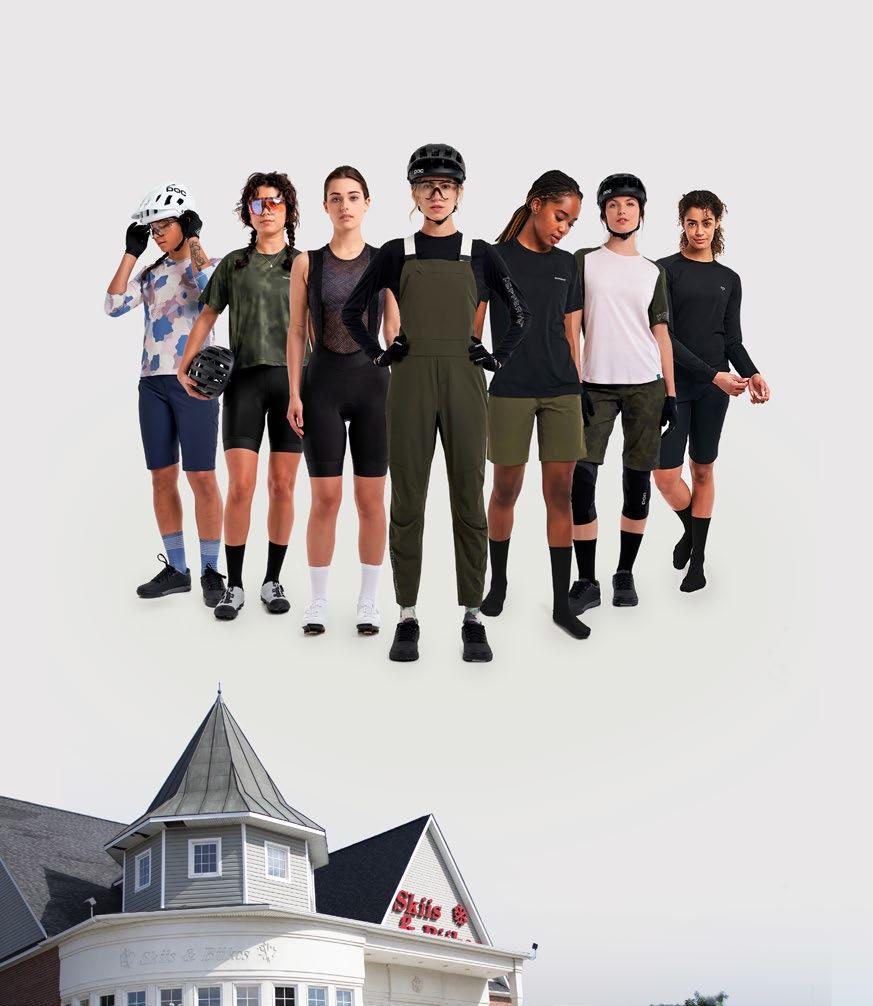BLUE MOUNTAINS










WHEN
Taking the ultralight platform we’ve built with our Exos/Eja thru-hiking backpacks and going even lighter, the new Exos/Eja Pro relies on featherweight NanoFly™ fabric and an essentialist approach to features to deliver a remarkably comfortable, durable and capable pack that weighs in just under one kilogram.

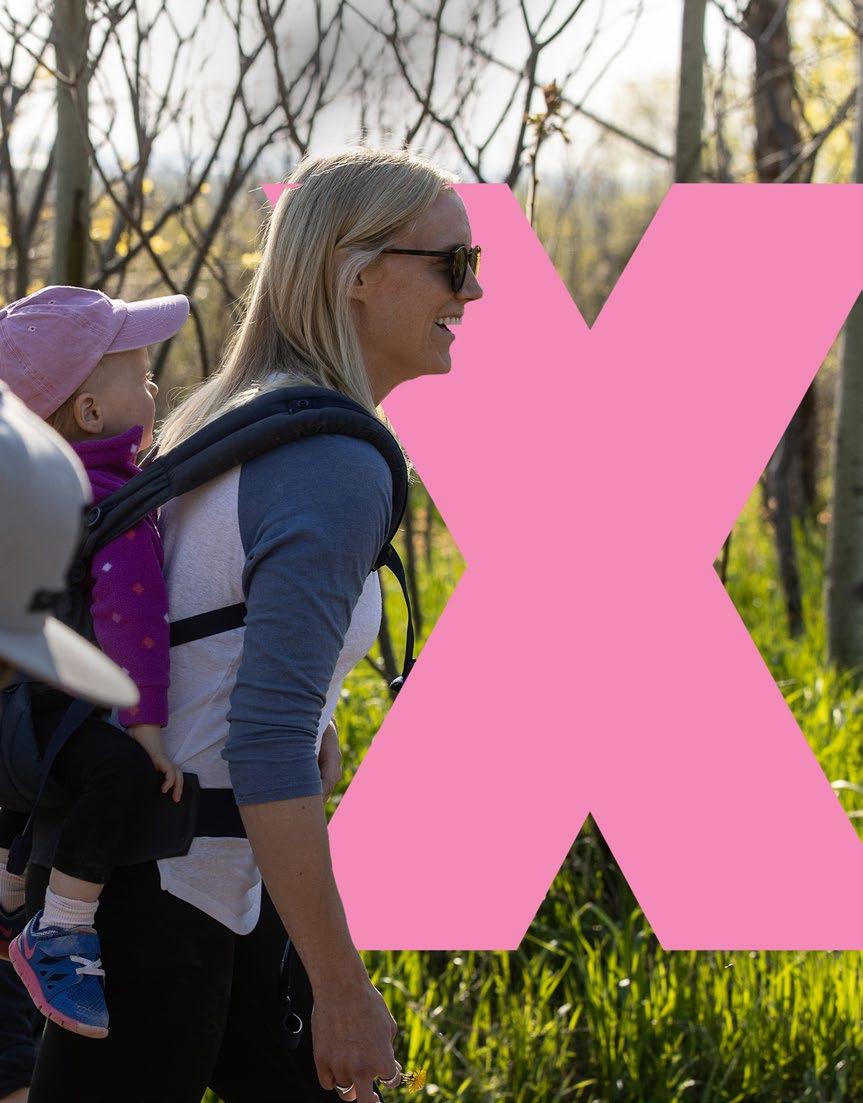



 YETI Ambassador Rafa Ortiz
YETI Ambassador Rafa Ortiz

AVAILABLE AT:
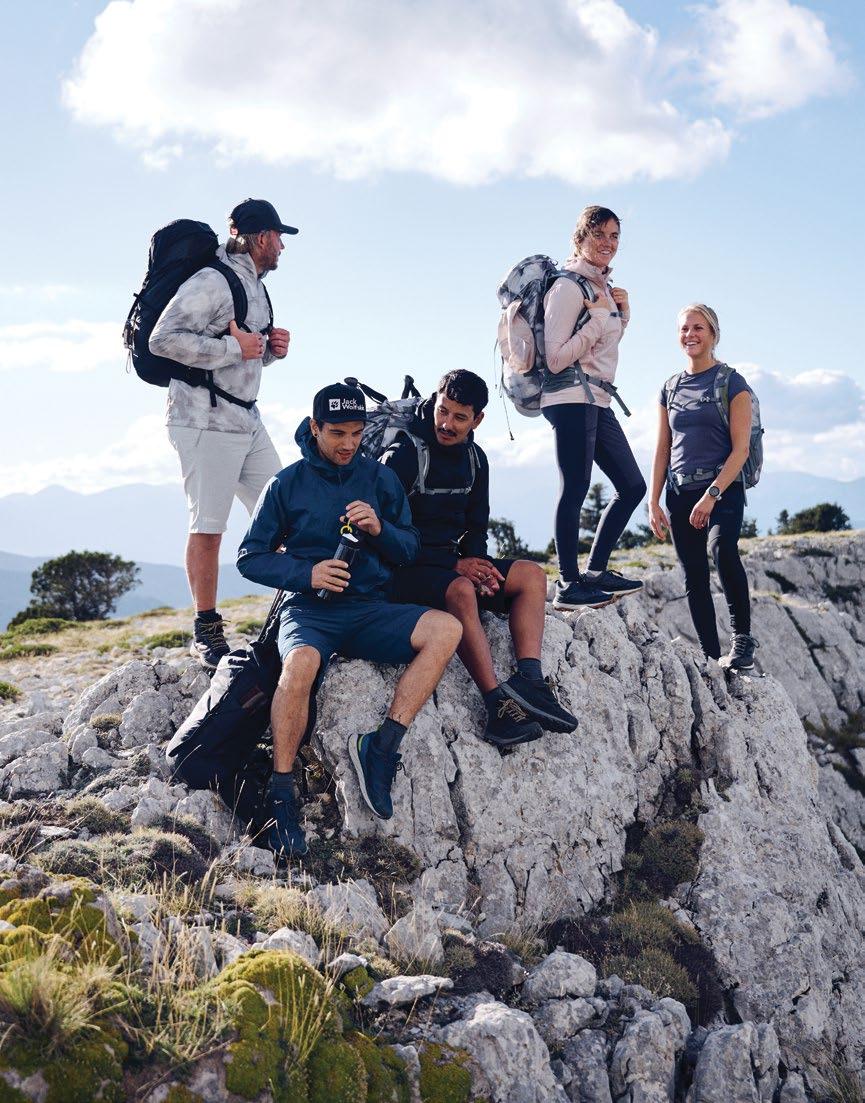
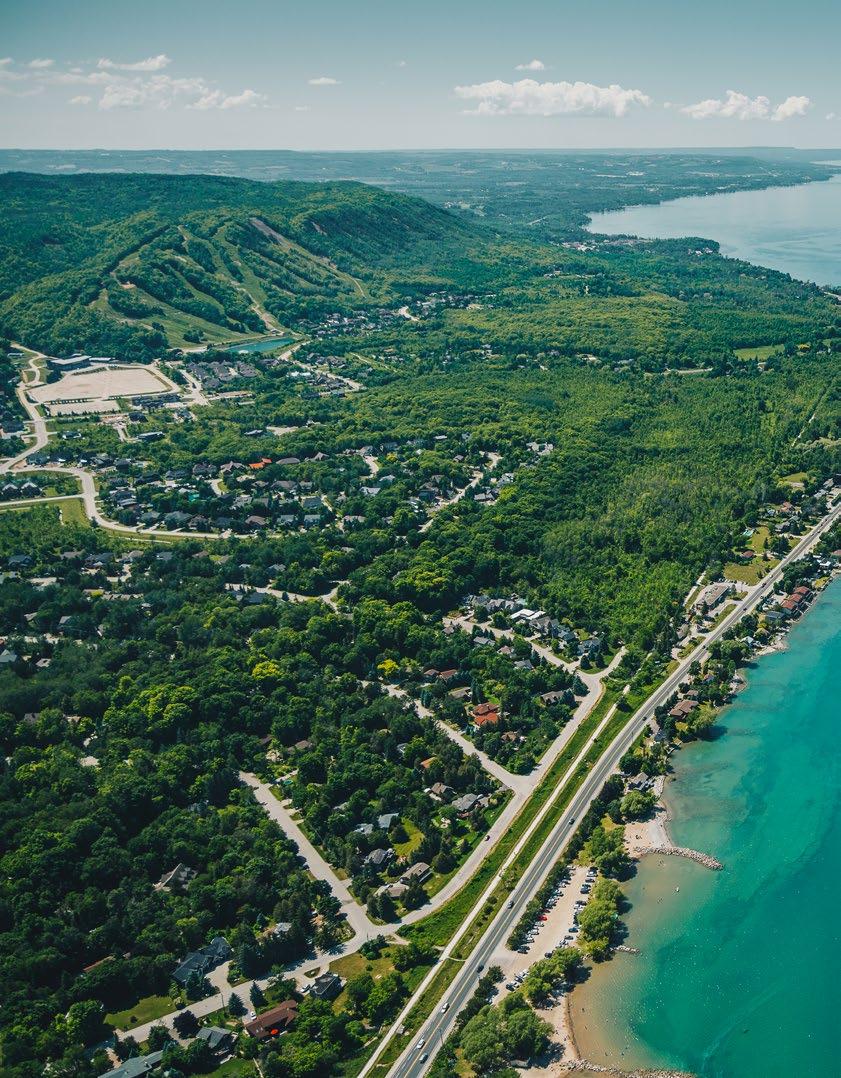
P.17 Editor's Message
P.18 Twenty Years of Mountain Life
P.53 The Reconciliation Trail
P.31 Wheel Well: The Magic Mountaintop
P.34 Paddling: The Stages of Nature Immersion
P.40 Food: Trail to Table
P.47 Weekender: Bespoke in the Woods
P.65 Enviro: Birding in the “Breathing Lands”
P.71 Backyard: Stories from the Ground
P.76 Biophiliac: Whither the Greenbelt?
P.81 Trails: Collingwood Offroad Cycling Club
P.85 Great Lakes: Paddle + Prayer for the Whitefish
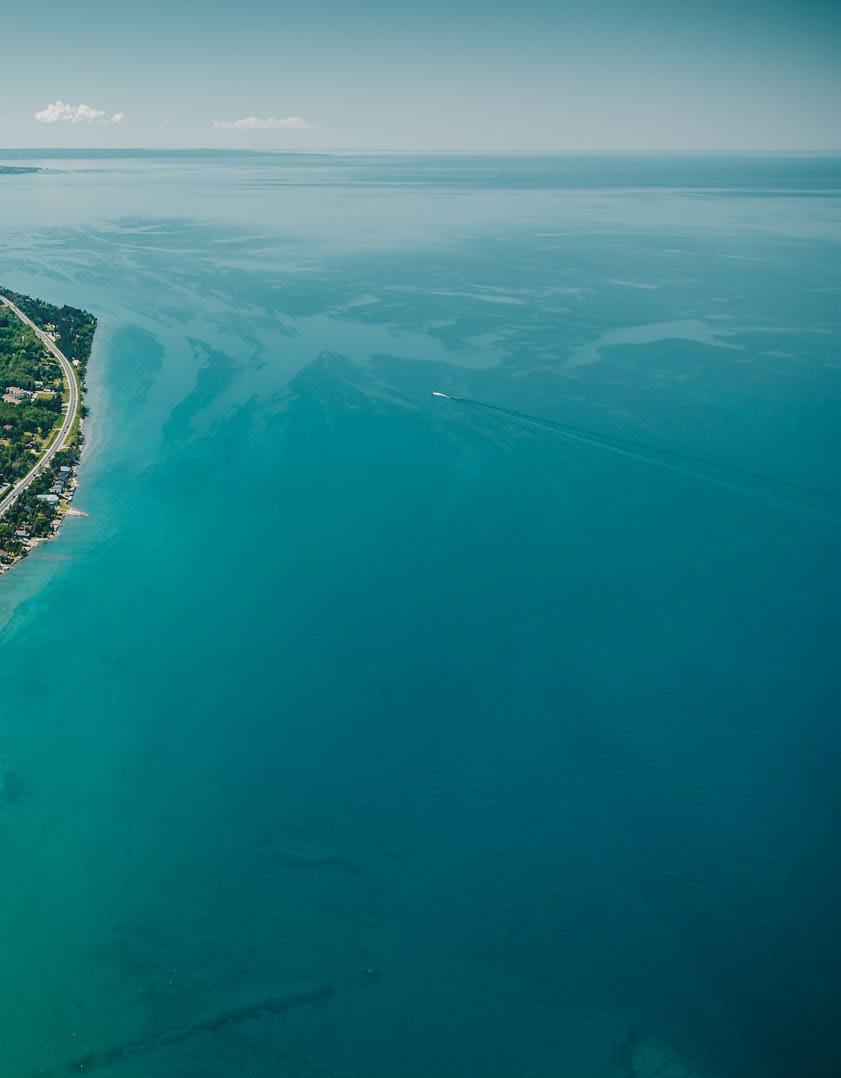
P.96 Gallery
P.114 Back Page: What Draws Us Home
PUBLISHERS
Glen Harris glen@mountainlifemedia.ca
Jon Burak jon@mountainlifemedia.ca
Todd Lawson todd@mountainlifemedia.ca
PRINT & WEB EDITOR
Ned Morgan ned@mountainlifemedia.ca
CREATIVE & PRODUCTION DIRECTOR, DESIGNER

Amélie Légaré amelie@mountainlifemedia.ca
CONTRIBUTING EDITORS
Allison Kennedy Davies allison@mountainlifemedia.ca
Colin Field colin@mountainlifemedia.ca
Kristin Schnelten kristin@mountainlifemedia.ca
Scott Parent scott@mountainlifemedia.ca
COPY EDITOR & PROOFREADER
Kristin Schnelten kristin@mountainlifemedia.ca
DIRECTOR OF MARKETING, DIGITAL & SOCIAL
Sarah Bulford sarah@mountainlifemedia.ca
FINANCIAL CONTROLLER
Krista Currie krista@mountainlifemedia.ca
DISTRIBUTION
Brendan Thompson brendan@mountainlifemedia.ca
CONTRIBUTORS
Leslie Anthony, Deirdre Buryk, Melanie Chambers, Sarah Chisholm, Geoff Coombs, Matt Cote, Alain Denis, Jeff Fletcher, Caitlin Foisy, Molly Hurford, Lani Imre, Maddie Johnson, Dustin JohnstonJewel, Jenna Kitchings, Asta Kovanen, Reuben Krabbe, Benny Marr, Drew McIvor, Conor Mihell, Carl Michener, Ryan Osman, Richard Roth, Dan Rubinstein, Peter L. Storck, William Tam, Heather Thompson, Tom Thwaits, Leslie Timms, Kyle Wicks, Jody Wilson.
SALES & MARKETING
Glen Harris glen@mountainlifemedia.ca 705 441 6334
Bob Koven bobby@mountainlifemedia.ca 416 721 9940
Stephanie Martinek steph@mountainlifemedia.ca 705 441 3684
Mike Strimas mike@mountainlifemedia.ca 416 779 7908
Lindsay Earle lindsay@mountainlifemedia.ca 416 553 5658
Jeremy Gourlay jer@mountainlifemedia.ca 705 606 5843
Published by Mountain Life Publishing Inc, Copyright © 2023. All rights reserved. Reproduction without permission is prohibited. To distribute Mountain Life in your store please call 705 441 6334.
Mountain Life is printed on paper that is Forest Stewardship Council ® (FSC ®) certified. The Forest Stewardship Council® is an international nongovernmental organization that promotes environmentally appropriate, socially beneficial, and economically viable management of the world’s forests. Mountain Life is also PrintReleaf certified. It measures our paper consumption and calculates the forest impact. Our paper footprint is automatically reforested at planting sites in Canada.






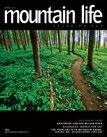
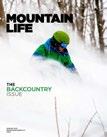

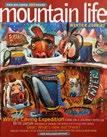
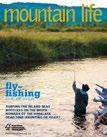
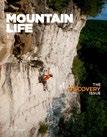
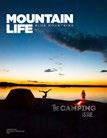
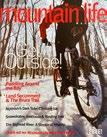
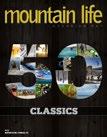

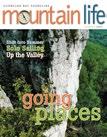

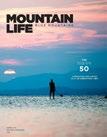


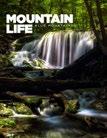

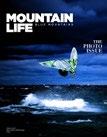

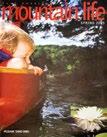


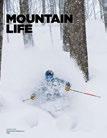



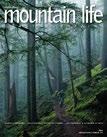
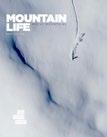


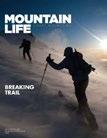














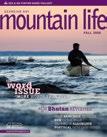






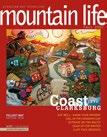


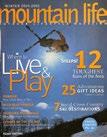

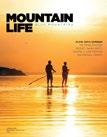
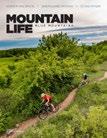
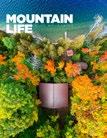

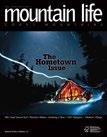


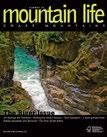



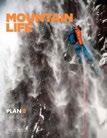









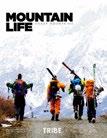






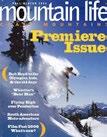






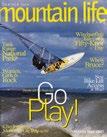
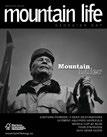
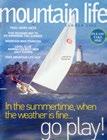



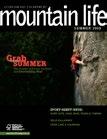

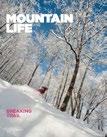

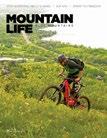
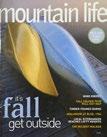

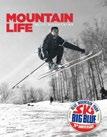
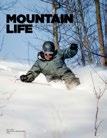


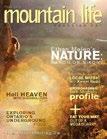






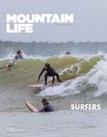
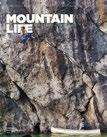

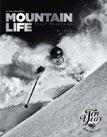


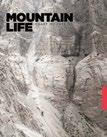
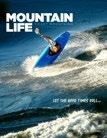
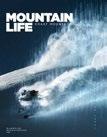

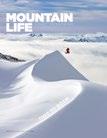
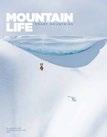



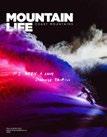
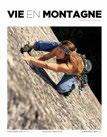



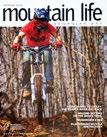
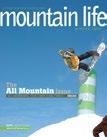


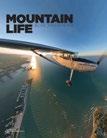

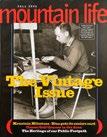
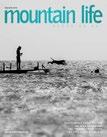


I stared in shock at the wreckage of my cooler. It resembled a crime scene of the sort that rattles veteran detectives. What was once a small, zippered vinyl cube was torn into shreds and covered in the blood-like juice and stringy remains of the steaks and bacon that used to be inside. My friends and I had hoisted it onto a tree branch the night before but evidently a raccoon or bear had found it.
Now we were out of food. Why had we packed nothing but meat?
We were on an impromptu backpacking trip on the Bruce Peninsula; over-planning was somehow uncool. I was 20 years old and had a lot to learn.
This summer, Mountain Life is also 20—and we aim to be better put-together than I was at that age. At 20, everything was in front of me and I knew roughly two things for sure: Childhood was over and adulthood hadn’t really started yet.
Today there’s more time behind me than in front, but that’s not as discouraging as it sounds. As I age, I recognize that humans can only refine their understanding of life—its successes to cultivate, its failures to avoid—as it accumulates in the rearview.
But is the past really behind us?
The Aymara people of the central Andes hold what seems to us an upside-down idea of time—they see the future as behind them, and the past in front. Though we’re conditioned to view time as one-way linear, the Aymaran perspective is nonetheless intuitive: Every day, in some form, we manifest our past. Everything we’ve learned (or failed to learn) is with us in the present. By contrast, and in spite of our inclination to grasp at it, the future isn’t in front of us like a trail marker. We plan for tomorrow and next week in the belief that those plans will transpire, but what feels like a true sightline into the future is merely our imagination at work.
If the prospect of the future is often frightening, it is also full of promise that humanity’s drive to innovate and our awareness of past missteps will help stave off the planetary meltdown that threatens everyone and everything we know.
We can all learn a little from the Aymara. Without the past in our sights, the present and future are meaningless. –Ned
MorganStarting with the Fall 2023 issue, I will be stepping down as editor. I welcome my indefatigable colleague Kristin Schnelten to the role. I plan to spend more time with my family and continue as digital and contributing editor.
There’s no way to start a story about Mountain Life without publisher Glen Harris dominating the narrative. He started the magazine, continues to run it and is the Herculean myth behind the brand. So who is he, and how did he get here? It’s a long story full of powder turns, crimp holds and water starts.
Growing up in Thornbury, Harris went to public school at Beaver Valley Community School and spent his weekends skiing at Blue Mountain.
After graduation from high school, way back in 1988, he did what many young men with a penchant for skiing do: He headed west. He went to Whistler for a ski vacation and didn’t come back.
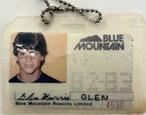



“I ran into a guy in Whistler that I used to work with and he asked if I wanted a job at a ski shop,” he recalls. “I stayed in Whistler on and off for the next 12 years.”

During those years he skied a ton. And he knew how to live frugally. His skis were old, complete with core shots, his gloves were duct-taped together and no one was wearing a helmet back then, so he didn’t even have one. His bike was an even sadder story. But he knew the culture. He knew what it took to prioritize a pow day. He knew which beach to head to when the wind was up. He knew singletrack was the future.
There was more to these years than just skiing bottomless pow. He learned to peel bark off logs for log homes and turned that ski hill into a bit of a career. And he kept exploring.

“I basically just kept saving up money and going on these awesome trips,” he says.
These trips included windsurfing trips to Maui, the Gorge and Baja. And rock climbing adventures in Egypt, Jordan, Thailand and Yosemite.


“I started writing a few articles. It was basically to legitimize all the trips.”
And slowly but surely, legitimizing those adventures became more and more realistic. So he attended the Western Academy of Photography, completing a diploma in photojournalism. He did two years of recreation management at Capilano College, which then
led to internships with the legendary ski photographer Paul Morrison and influential filmmaker Christian Begin. He also interned at Blue, an outdoor magazine and media company based in Manhattan.
“It was one big room with editorial, advertising and circulation. That’s where I learned how to run a magazine and how a magazine works.”
After his time in Whistler he moved to Nelson for five years, where he started Kootenay Mountain Culture magazine. But then he got the call no one wants.
“My mom got sick with cancer,” he recalls. “My family called me and said it was time to come home. She ended up living for four more years, and I’m thankful for that. It was also cool, because I rediscovered this area. It was nice to come back here 17 years later and just really fall in love with this place again.”

Realizing the potential for outdoor adventure in southern Georgian Bay, he saw a hole in the media landscape. The region needed a mountain culture magazine of its own. Mountain Life was born.


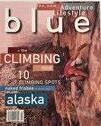


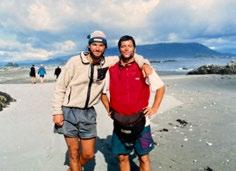
Rallying adventurous advertisers like Blue Mountain Resort, Talisman Resort, Sojourn, Kamikaze
and Creemore Springs, he managed to publish the inaugural issue in the summer of 2003. He brought on old high school buddies to create content. Ned Morgan, Rob Buchanan, Jamie Green and Fly Gurlz founder Michelle Ward contributed. When it came back from the printer, the front cover was a shot of Sarah Mills riding singletrack, shot by Ward; the back cover was a pixelated mess of an ad for Squire John’s Ski Shop. It was 30 pages and more like a brochure than a magazine. But people loved it. Was it a financial success, though?
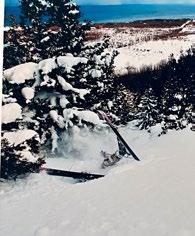
Starting any magazine back in the summer of 2003 wasn’t something your guidance counselor would have suggested. It was the beginning of the digital age.
“No,” Harris laughs. “I didn’t make money with Mountain Life for a while. I was never really motivated to make money; it was just to see it in print. I was a dirtbag for so long, I just really didn’t care about money for quite a while. It’s kind of shocking, actually. I was in my early 30s when I started it. I milked the traveling and ski bum life for a long time.”


For the next three years, Harris continued publishing the magazine on a quarterly basis. Each season saw a fresh grip of content with new contributors, new advertisers and new stories being told for the first time ever. And the quality continued to progress. The photos got better, the stories more in-depth and the
With ten years of friendships in Whistler, it wasn’t long before Harris started looking for a reason to head west a couple times a year. And when his longtime buddy Jon Burak saw what Harris was up to, they partnered to create a Coast Mountains edition of the magazine. Focusing on Whistler and Squamish, they found legendary gonzo journalist, horror filmmaker and all-round character Feet Banks as editor. In the winter of 2006 the premiere issue of Mountain Life Coast Mountains dropped.


“I had zero editing experience,” says Banks. “Just a weekly movie column and a handful of stories placed in Freeze, SBC Skier and—thankfully—Beautiful British Columbia magazine, which was edited at the time by Anita Willis and Shanna Baker. The notes they gave me on my work made perfect sense. I’d never even seen comments or tracked changes in a Word document so I just used their editing style as a foundation and figured it out as we went. Jon and Glen were pumped on the new mag and their enthusiasm carried over. Fortune favours the bold, but we worked our asses off too. We learned by doing, made mistakes, pushed on and found a groove."
Photojournalist Todd Lawson joined the crew in the fall of that year and MLCM has been printing three issues per year ever since.
In 2007 Amelie Légaré joined the team as creative director and has been a tireless force to be reckoned with ever since. She currently designs all of ML’s titles. And she kills it.
"The core team came together pretty naturally and quickly. We still fight like siblings about the cover sometimes, but it mostly feels like a pretty tight band or a family,” Feet says.

Starting any magazine back in the summer of 2003 wasn’t something your guidance counselor would have suggested. It was the beginning of the digital age. While print is the backbone of Mountain Life, the magazine wasn’t immune to the lure of zeros and ones. The first mention of a website appeared in the Fall 2007 issue when an advertisement asked, “Got a Minute?” imploring readers to fill out an online survey with a weekend at Blue as a prize.
Any record of that early site is long gone, but ML’s print journalists attempted to navigate their way through the early days of content creation, social media and an increasingly short attention span. For years the east and west sites were kept separate with wacky web addresses like www.gb.mountainlifemag.ca and www. cm.mountainlifemag.ca, but they stuck to it. Eventually ML’s Facebook and Instagram audiences grew and Harris found the right team to manage it all with Sarah Bulford at the helm. Now digital offerings are a complement to ML’s print offerings; in 2022 the website garnered 2.34 million impressions and social media channels another 7.9 million.

Undeterred by the doom and gloom attitude surrounding print, the ML team pressed on with the first issue of the Mountain Life Annual in 2013. This gathering of the country’s best images and stories was more coffee table book than magazine. With an MSRP of


$12.95 on the newsstand, these gorgeously curated publications were masterfully edited by the legendary ski journalist Leslie Anthony.
“The idea was to give all these amazing things that were happening out there more space and highlight not just what and where the story was set, but the motivations behind things—which were coincidentally a great way to connect people to the outdoor world and progressive initiatives within it,” says Anthony. “And the way we did this was to open up the design a bit, run more and larger photos, and have timeless, not newsy, stories with a really long shelf life. Something you could go back to again and again and never want to throw out. So even the advertisers who came on board were really partners in this giant, long-lasting outdoor hug.”
Running for seven years, the project was a resounding success. And while the Annual hasn’t returned since Covid, it isn’t dead.
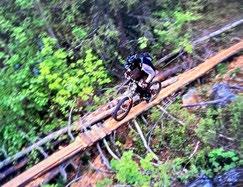
“We’ve been chatting about bringing it back,” says Harris. “We have a formula. It’s not on the radar for 2023, but we’re talking about it for 2024.”
With many proclaiming “Print is dead,” as early as 1984 (Harold Ramis playing Egon Spengler in Ghostbusters is credited with the first usage), the number of magazines that have folded in the past couple of decades are like nails hammered into a coffin.
“The idea was to give all these amazing things that were happening out there more space and highlight not just what and where the story was set, but the motivations behind things…”
called next season? Here’s the dirt behind the variations.


“Our name changed several times because of a minor identity crisis of our own making,” says editor Ned Morgan. “After ML launched the B.C. edition (Mountain Life Coast Mountains), the Ontario edition suddenly needed a qualifier. We cycled through several. Mountain Life Georgian Bay was an attempt to incorporate the body of water we know and love, but we were clearly not a publication all about water. Mountain Life Georgian Bay Escarpment was a clunky and fortunately short-lived attempt to join up the regions we were most invested in. Mountain Life East was us trying to encompass the adventure geography we covered throughout Ontario and into Quebec and Vermont. After some feedback, we realized we couldn’t call ourselves an authority on the “East”—a word that signaled far too much. Mountain Life Ontario was a way of pulling back from “East” while acknowledging that our content often covered topics outside our Blue Mountains backyard. But finally we settled on Mountain Life Blue Mountains—at this point, we figured everyone understood we covered both regional and national/international topics and adventures. One thing is almost certain: As our Coast Mountains editor Feet Banks once pointed out, we’re probably the only magazine with ‘mountain’ in its name twice.”
The winter of 2015 saw the last issue of Quebec’s Ski Presse on the newstands of Tremblant and beyond. In July of that same year, SBC Media filed for bankruptcy and laid off its staff; SBC Skier, Snowboard Canada, SBC Surf and SBC Skateboard all ceased publication.


SKIING magazine ceased publication in 2017 after nearly 70 years. Canada’s Pedal magazine and SkiTrax stopped printing in August of 2019 after a 30-year run. 2019 saw the end of Transworld Skateboarding.
In 2020 one of the inspirations for the creation of Mountain Life, Powder magazine, was “suspended indefinitely.” Other titles under the same umbrella that also inspired ML’s contributors, including Bike and Surfer, were also put on hold.
So when it comes to the bottom line, starting magazine titles in this digital age
“No one’s getting rich in the outdoor media industry,” says Harris. “It’s about the lifestyle and creating opportunities to go do fun stuff and just get yourself out in the elements. That was the whole motivator before Mountain Life and well into Mountain Life. It has always been about lifestyle.”
And it continues to succeed. Despite the warnings, and as Harris watches other magazines fall by the wayside, he continues to introduce new titles.
When he met former Ski Presse publisher Pat Wells during a Tremblant ski trip in 2019, another title was born.


“I just kind of hit it off with him and realized we should launch a mag in Quebec. It was just Blue Mountains and Coast for so many years.” says Harris. “I realized that, if we had a Quebec mag, we’d be more attractive to national outdoor advertisers. We launched Vie en montagne and later found Frédérique Sauvée for the editor position.”
Then he found another kindred spirit in Kristy Davison out in Canmore, Alberta.

“Right away it was like I was working with a sister,” says Harris. So in 2021, during the height of the pandemic, with sporadic lockdowns and financial uncertainties, the team launched the Rocky Mountains edition of the magazine with Davison as editor.

So what does the future hold for Mountain Life?



“More of the same,” says Harris. “Keeping the lifestyle going. Lots of family lifestyle now, which is awesome. Hanging out with the kids and ripping with the kids. We’re just gonna keep on going.”
That determination has always been part of the magazine. A dedication to lifestyle over profit has always worked.
“I just decided this is what I wanted to do and I was ignorant enough to think I could do it,” he says.
Of course Harris isn’t oblivious to the role others have played in his success.
“I just feel really lucky, I’ve surrounded myself with good people. I’m friends with everyone I work with. It’s always been that way. I feel so fortunate to have solid people around and really appreciate all our contributors and readers and followers. I just feel very thankful for that. I hope to keep everyone’s stoke up.”
WINTER 2009 ML publishes an exposé of water-bottling companies in the Blue Mountains region, written by Paul Wilson.


$189,300
SUMMER 2004
Lynn Derrick is art director. A map of the Blue Mountains region drawn by artist John Haines appears in the magazine for the first time and reappears in numerous issues over the next decade-plus.

Median price of a single family home in Canada in 2003.
2004 Blue Mountain Early Bird 5x7 pass is $149.


2011 As the first of many awards under our belt, it felt very special when ML Coast Mountains took home the Magazine of the Year award for the Olympic issue at the Western Magazine Awards.

SPRING 2009 ML features an e-bike review for the first time—a Giant Twist Freedom DX. With a 300-watt motor in the front hub, the list price is $2,399.

FALL 2010 ML publishes the cover story “Shades of Blue,” a dip into Blue Mountain Resort’s deep’80s archive with photos by Henri Georgi and Rob Buchanan. The verdict? “Pink Ditrani one-piece fart sacks, outrageous Carrera sunglasses and uberlong straight skis are pretty damn ridiculous.”
SUMMER 2009 ML Coast Mountains publishes the River issue, highlighting the Ashlu, Chilcotin and Colorado, plus an investigation of a mysterious rock carving near Mount Currie.
WINTER 2010 Mountain Life joins 1% For the Planet, donating one per cent of its annual sales to the global movement dedicated to building and supporting an alliance of businesses financially committed to creating a healthy planet.
WINTER 2011 Melanie Chambers flings a bra onto the infamous Blue Mountain Bra Tree.
FALL 2011 Contributing Editor Allison Kennedy Davies pens her first piece, “16 in 1: The Sunrise to Sunset Multisport Challenge.”

$3.95
FALL 2005 ML puts a price of $3.95 on the cover of this issue and this issue only. Susan Meingast is the art director.

2006 Collingwood’s population is 17,290; Town of The Blue Mountains is 6,460.


WINTER 2006 First issue of Coast Mountains (B.C.) is published.


SUMMER 2008
Melanie Chambers writes her first piece for ML, “Eden Revisited.”
SPRING 2008: Colin Field becomes editor and Leslie Anthony writes his first piece for Mountain Life.

SUMMER 2007
Cindy Schultz is the creative director.

WINTER 2012 Amelie Legare comes on as creative director, initially at ML Coast Mountains. Soon she will be designing all ML editions.

SEPTEMBER 2012
Mountain Life gets an Instagram account.

2012 All ML publications are printed on paper certified by the Forest Stewardship Council (FSC).



WINTER 2013 The first Mountain Life Annual prints. One of the features is “A Failure of Reason,” a critical examination of the Enbridge Northern Gateway pipeline proposal in B.C. The Canadian government cancelled the pipeline in 2016.
SUMMER 2013
Ned Morgan takes over as editor.
FALL 2006 ML runs a feature on Blue Mountain Resort’s 65th anniversary, penned by the founder’s son, George Weider.

FALL 2007: ML puts a price of $4.95 on the cover. Gerad Treanor is the creative director.
FALL 2012 ML publishes the 50 Classics special issue, featuring hikes, climbs, bike and paddle routes and more, complete with custom maps and sage advice. (Six years later ML publishes a sequel, the Trippy 50 issue, focusing on local trips of various lengths and levels of difficulty.)
JUNE 2013 The Mountain Life Facebook page is created.
WINTER 2013 Mountain Life hosts the first ever MULTIPLICITY event at the Telus Ski & Snowboard Festival in Whistler.
SUMMER 2014
Snowboard and skateboard pioneer Willi Winkels takes the cover posthumously.


WINTER 2014 ML publishes a piece about weed, “Growing Peacefully,” way before legalization.




2015 Mountain Life takes home Silver at the Canadian Printing Awards, three years before winning Gold.

2015 2014
WINTER 2019 ML profiles the work of wildlife photographer Maxime Légaré-Vézina, who will go on to contribute to several ML editions.
2019 ML joins the PrintReleaf program, which measures paper consumption and calculates the forest impact. ML’s paper footprint is automatically reforested at planting sites in Canada.
2019 The second issue of Below Zero hits the stands.

SPRING 2021 Scott Parent debates the impact of tourism on the Bruce Peninsula in “Peninsula Pressure.”
OCTOBER 2021
Mountain Life Rocky Mountains publishes its first issue.


2019
WINTER 2020 ML’s Quebec edition Vie en montagne publishes its first issue.

FALL 2014 Outdoor enthusiast, world traveller and ML Financial Controller Krista Currie joins the team. She keeps the whole ship afloat and on course. 2020

$355,000
Median price of a single family home in Collingwood in 2015.
WINTER-SPRING 2019 For its Time Travel issue, ML Coast Mountains publishes one of its most acclaimed covers, featuring composite images of athlete Brett Tippie from several decades, in a photo illustration by Stu MacKay-Smith.
2020 Creative Director Amélie virtually accepts the Gold prize for best Art Direction for the ML Annual feature “Treeline.”
2020 ML publishes the Camping issue, including pro kayaker Benny Marr’s “Top 5 Favourite Remote Campsites.”
2021
SUMMER 2021 ML profiles Collingwood pilot Annie Rusinowski, whose photo of her Cessna Bird Dog—taken with a wingmounted camera—graces the cover.
JULY 2021 Feet Banks drops the first episode of the “Live It Up with Mountain Life” podcast.
2016 Collingwood’s population is 21,793; Town of The Blue Mountains is 7,025.


WINTER 2016 ML publishes the story “Ice Breakers,” an in-depth look into the culture and people of Great Lakes surfing.
FALL 2018
Contributing Editor Kristin
Schnelten writes and shoots her first piece for ML.
2018
SUMMER 2016 ML publishes “Sisterhood of the Wake,” about the women’s wakeboarding scene in Ontario.

2023
2022
WINTER 2023 ML
Contributing Editor, photographer, filmmaker and all-around waterman



Scott Parent bags his first cover shot.
2016 2017
ML drops the first issue of Mountain Life Resort Guide


2016
2017 The ML Coast Mountains team wins the Arts & Culture category at the Whistler Excellence Awards, as voted by locals.



SUMMER 2022 ML Coast Mountains publishes the feature article “Wisdom of the Watchmen,” about Indigenous guardianship in Gwaii Haanas, B.C.
$797,500
2017

WINTER 2017 ML teams up with Georgian Bay Community School to launch the Pursuits Film Festival in Meaford, Ontario.

2022 Population of Collingwood reaches 26,352; Town of The Blue Mountains is 9,390.
Median price of a single family home in Collingwood in 2022.
2023
MARCH 2023 ML Rocky Mountains receives 7 nominations at the 2023 AMPA Awards. In 2022, MLRM took home the Best Landscape Photograph award for a shot by Steve Ogle in the inaugural issue.
2023 After a Covid-related slowdown, ML print page counts are back up to pre-pandemic levels. And with higher traffic on www.mountainlifemedia.ca, we’re sharing our love of the outdoors with more people than ever. And it’s all thanks to our advertisers and readership. Here’s to the next 20 years.




The new hiking shoe from Rossignol
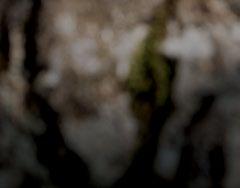


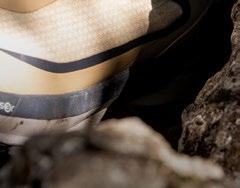
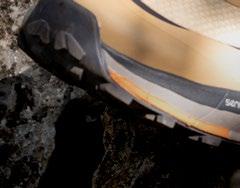



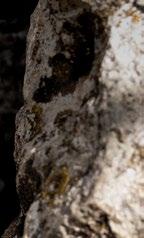
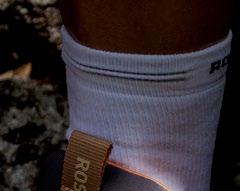





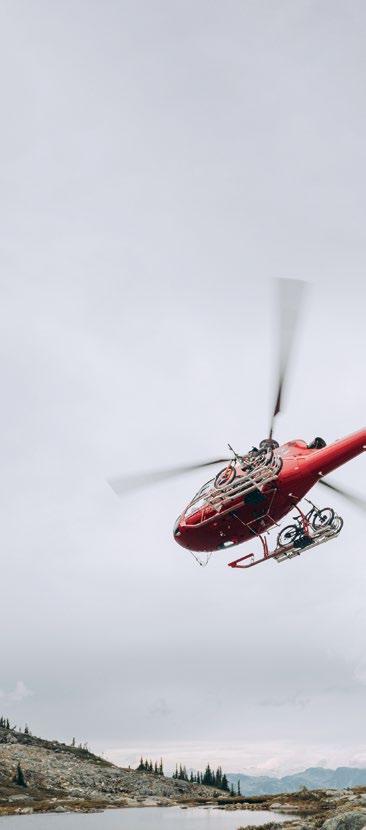

RIDE FARTHER. RIDE FASTER. RIDE FREE.
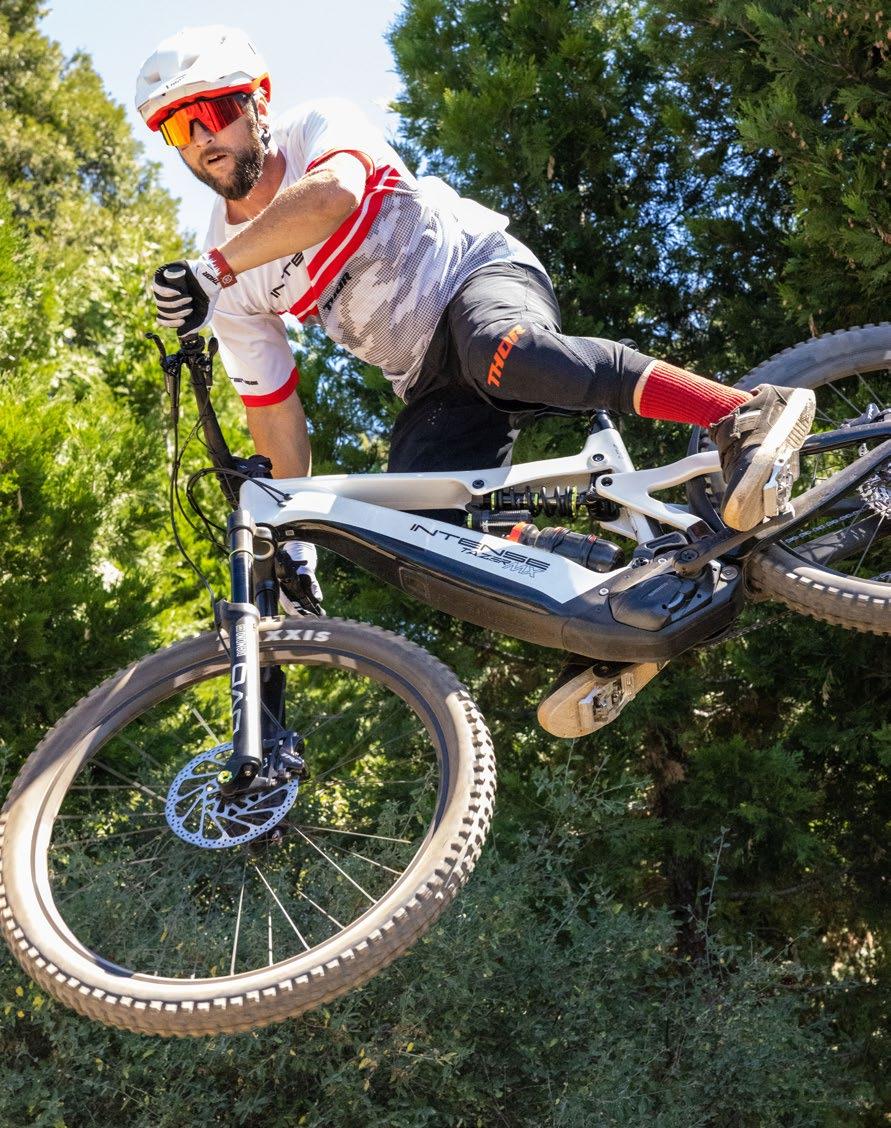
Disoriented from eight hours on the road, we roll through Sutton, Que., at dusk. At the tarp-and-timber Huttopia sign, we make a sharp right and head up—straight up—a narrow, muddy gravel drive. Beyond deep opposing ditches, we get quick glimpses of metalroofed cabins buried deep in the hardwoods. Higher still, a few prospector tents appear, set on decking and connected by twinkling party lights, hazy in the low light of evening.
Oh Quebec, how we love your laid-back, welcoming vibe. My exhausted, zero-French brain is confused, and when I open my mouth to ask about the cabin and trails, German spills out. Before I have a chance to apologize, the Huttopian behind the counter shoots it right back at me. Of course she’s tri-lingual. Of course.

Armed with a map and a plan, we locate our designated parking spot and start unloading, stacking bags and bins into rugged farm wagons. It’s dark now, and we follow the narrow beam of headlamps, pulling carts and walking bikes and dogs 100 metres through the woods, over a soft path with invisible puddles.
Our cabin is perfect—just big enough for us to strew our gear, and just rough enough to make us feel we’re on an actual adventure. The bikes are safe outside, the dogs are comfy by the fire and, after a trek to the lodge for wood-fired pizza and local beer, we’re content enough to crash.
At the final crest, the road opens into a small parking area, and we clomp into the central lodge, where we’re stunned to a pause by what lies beyond the door. The sprawling, timbered space is warmed by the flicker of a wood stove and fragrant with the sweet smell of crêpes from the kitchen. The tables are full of young families hovered over board games, camping-weary couples diving into a hot meal and muddy friends sharing après-bike pints.
The light and clarity of morning allows us to finally get our bearings. Our little cabin is at the end of its path, just a couple metres from a rocky stream. From the front porch, we spot only three other cabins, hidden in the trees between us and the main drive.
After a breakfast of croissants at the lodge, the boys take off on their bikes, winding their way through glamping setups and camping pitches to access the Mont Sutton trail system. My daughter and I check out the café, sundry shop, bocce ball court and yoga space. There’s an awful lot going on up here, hidden away on this forested mountaintop.
Huttopia is all about bringing urban dwellers out into the natural world, making the forest accessible and comfortable—while keeping accommodations decidedly out of the posh zone.
Sutton may currently be Canada’s only Huttopia, but 55 more locations dot the world map; most are in France, but a couple are just over the border in New England. Each Huttopia is recognizable for its trapper-style canvas tents and family-friendly central meeting areas, including a lodge with hot food, a pool (there’s one here, too), reading nook, indoor and outdoor games and a full slate of activities. They’ve done an incredible job with the Sutton lodge; much like the common area of a hostel, the setup encourages you to leave your cabin or tent, gather around the giant Jenga or campfire and meet a friend or two.
A French couple established the brand just 20-odd years ago, drawing inspiration from their experiences while camping in the Canadian wilderness. For them it’s all about bringing urban dwellers out into the natural world, making the forest accessible and comfortable—while keeping accommodations decidedly out of the posh zone.

After lunch, my daughter and I hike the Huttopia trails, tucker out the dogs and play tourist in the adorable town of Sutton. Late afternoon brings a meetup at the mountain base, where we stumble upon a tiny music festival. Kitsch outfits and jazz hands abound on stage, the poutine truck has no lineup, and the beer—Danish this time—is ice-cold. Sheltered from a drizzle beneath the umbrella of a picnic table, we cheer for the band along with a few dozen other bikers and their families, soaking in the magical Quebecois énergie
The boys are fairly giddy, mud-splattered from helmet to pedal, and report the trails are damn near perfect. Well-designed, with steady switchbacks and whooping berms, over shimmering granite and through glowing ferns, enduro-style singletracks traverse the mountain beneath no-nonsense double chairs that beg you to come back for a wintertime ride.
It’s hard to say no to that invitation. If only our mini-chalet were open year-round, we might just move in for a week next January. But we’ll settle for a return mountain bike trip; this place is just too good for a one-and-done checklist.
Huttopia Sutton is open mid-May through early October every year. www.huttopia.com




words :: Ned Morgan photos :: Scott Parent
Nature immersion is a new phrase for an old phenomenon. Our pre-urban ancestors were immersed up to their eyeballs in nature. They didn’t see it as a good or a bad thing; it was the only thing. Today we have much to learn, or re-learn, about how nature can help us heal and thrive in an increasingly urbanized and anxious world.
So: Immersion. The word has a sensuous feel to it. We long to be immersed, in warm water, in loving relationships, in a caring community. But nature? It doesn’t automatically welcome us. It doesn’t know the meaning of the word. Perhaps that’s what makes nature immersion so rewarding. Sometimes you have to work for it.
What exactly is nature immersion and how can it help you? The best way to figure that out is to throw yourself into a wilderness (or near-wilderness) experience. Late last summer, on a paddling trip to the northwest corner of Georgian Bay, a bout of stormy weather jump-started our immersion ride.
1
“In the context of nature exposure, individuals may experience a ‘pre-liminal’ space with old and disturbing thoughts initially. However, once in the ‘liminal’ space [a transition between one stage and the next], individuals instead experience feelings of calmness and a sense of mastery.” *
For those of us accustomed to spending most of our days in climate-controlled rooms looking at screens, sudden nature immersion is jarring, especially when the weather isn’t Instagram-friendly.
On the first day of our trip, we stand in the rain on Sly Fox Island. Torrents gush over the Canadian Shield granite at our feet while we stay mostly dry in our raingear, watching our paddleboards bob on their tethers in a tiny bay. It’s a warm morning in late August and the rain isn’t cold, though the wind is shearing the whitecaps off the waves as soon as they form.
We launched our paddleboards a few hours ago at Chikanishing Creek (in Killarney Provincial Park) and pulled over onto this island when the sky suddenly darkened. Standing on the shore now, resisting our instinct to seek shelter from the rain, is a strange and liberating sensation.
After the squall passes we’re back on the water, heading east along the outer shore of Phillip Edward Island—Manoomin Mnising in Anishinaabemowin, which roughly translates as “island of the good berry” (wild rice). We don’t see any other paddlers out here. Most people stick to the sheltered routes. After some sketchy paddling against a stiff side wind, we make it to our campsite on West Fox Island by mid-afternoon as the skies clear. The wind is still building but now we feel safe, and the transition—from urbanized to nature-immersed humans—is complete.

“While cognitive restoration and physiological well-being are the prominent and renowned benefits of nature exposure, there is one important construct that is often overlooked—that is, the humannature relationship; also known as connectedness to nature.”
We proceed to explore the island, swim in a knife-blade of a bay, set up our tents and collect firewood. The relentless wind and waves really bring home our isolation. Nothing and no one can get to us.
The next day begins clear and windless. We have cell reception— not immersion-friendly, but few can argue with the usefulness of a weather forecast—and the report is calling for more high wind from the southwest by mid-morning. We need to paddle a long length of the windward side of Phillip Edward to make it to our next campsite.
Once we cross the open water, it feels reassuring to be near Phillip Edward, but that feeling doesn’t last. Up close, this doesn’t look like a big island so much as a labyrinth of shallow inlets, shoals and islets, all churning with cross-chop. We face gusts up to 35 knots as our navigator Scott Parent leads us in and out of sheltered passageways through the maze while keeping us on our route.
Two paddleboarders bottom out on shoals, barely escaping serious damage to their hulls, while another is thrown onto a rock; he is lucky to escape with a minor injury.
All we can do is keep paddling as hard as we can—no stopping to take photos or even to drink water. Every paddle stroke matters. When nature throws an immersion curveball, you dig deep and drive it right down the middle.









“Across more than one hundred studies on nature/wildlife exposure, stress mitigation has been shown to be one of the most consistent and important psychological benefits.”
Our destination, Hincks Island, lies on the eastern edge of Phillip Edward, near the mouth of Beaverstone Bay. After making camp we explore on foot, discovering a valley thickly wooded with birch and pine, hidden from view in the middle of the island, and a two-pronged headland of pink granite smoothed by deep time into countless curvilinear variations. A few of us spend a halfhour enthusing over a rock-bound colony of mosses topped with cranberry which, at over a metre thick, is impressive; we surmise it’s been growing on this lonely spot for hundreds if not thousands of years. This is peak immersion: humans transfixed by the beauty and resilience of nature and transported from the anxiety treadmill that powers many of our days and nights.
The next morning we head northeast into Beaverstone Bay, past Point Grondine which, according to legend, the voyageurs named (from the French verb gronder, “to rumble or roar”) for the audible bashing inflicted by the Bay. The wind is at our backs, pushing us toward the last leg of our trip: Point Grondine Park, owned and operated by the Wiikwemkoong Unceded Territory. Here we leave
the big water and, at the bottom of the bay, portage into the park. The contrast between the rumble and roar of Georgian Bay and the tranquility of this forest-bound river and lake system is striking.
So why is nature immersion good for us? The article I’ve quoted here goes into painstaking detail, backed up by peer-reviewed research. Among other benefits, immersion reduces blood pressure, anxiety, depression and cortisol (stress hormone) levels. Anecdotally, I would add that immersion serves to shift our focus—away from the daily chimera of free-floating fear, toward tackling and overcoming certain obstacles.
The obstacles on our trip—mainly, paddling through near gale-force winds with no shelter in sight and navigating through a waterscape that even the most inventive maze-designer could never dream up—proved unpredictable but manageable. Nature is a powerful tonic, and once you realize you can call on stores of determination you didn’t know you had, the fear will fall away.

*All quotes from “A Guide to Nature Immersion: Psychological and Physiological Benefits,” by Pei Yi Lim, Denise Dillon and Peter K. H. Chew, International Journal of Environmental Research and Public Health, August 2020.



words :: Deirdre Buryk illustrations :: Asta Kovanen




Have you ever heard of an invasive plant with leaves that taste like garlic and roots that taste like mustard? Or Ontario’s very own lemon zest that comes in berry form? How about a root so robust it tastes like coffee (well, almost)?

Most of us walk by this cornucopia of food—guilty as charged. I grew up in a city where the assumption is that food does not get picked from the street. You pick it up from grocery stores and restaurants only. That was until I developed a new relationship with nature and started to connect directly to the environment by picking my own food. It is truly a gratifying experience. And it all begins with taste. The natural variations in geography and seasonal fluctuations reveal themselves in subtle bursts of flavour. There is so much biodiversity to discover in your own terroir. With easy-toidentify trail-to-table finds, neighbourhood foraging can begin with a simple walk.
If you like your coffee black, you will like chicory. Just like dandelions, chicory root is harvested and toasted into a caffeine-free alternative to coffee. You can use every part of the plant. The lobed green leaves serve for salads, same goes for the purple-blue aster flowers. And the root can be pulled out in the fall (leaving 1 inch of the root top to re-bury for possibility of new growth), washed, bitter outer layer scrubbed off and dried for steeping. Sometimes chicory is called coffee weed for this very reason. You will also see names like blue dandelion, blue sailors and blueweed. Chicory is known to help with high blood pressure, upset stomach, constipation, liver disorders and rapid heartbeat. Who knew such a superfood was hiding in that back corner of your local park?

Garlic mustard is exactly what it sounds. It is garlicky, it is mustardy and it is a delicious green. It also is one of Canada’s most aggressive invaders, and threatens biodiversity. You will see these tall green plants rising in the spring from roadsides to vacant lots. Anywhere there is a bit of sun and soil, there is garlic mustard. So go wild when harvesting these plants. In the first year, garlic mustard grows just a cluster of leaves shaped like a rosette. A strong root system develops, and those that survive the winter make flowers with hundreds of seeds in their second year. They look a lot like they could be a part of the carrot family (in fact, they are a part of the Brassica family). The telltale sign of garlic mustard is when you pluck a leaf off and rub it in your hands. If it smells like garlic, you’ve found yourself an invasive garlic mustard plant. The good news: It’s not only delicious, but high in vitamins A and C. The root can be shredded like horseradish, and the stems and leaves give off a strong garlic flavour, perfect for pesto.

You can find Saskatoon berries (also known as serviceberry or Juneberry) in woodlots, side roads and planted in town or city parks. The purple stains on the sidewalk are a dead giveaway. These berries grow on a small, gray, barked shrub or tree that can span up to 10 feet. In spring, the berries go from a matted, deep red to a dark purple-blue, which is when they’re at their sweetest and ready to be picked. At this stage they will be plump and juicy. They look like a blueberry with a thicker skin, but their taste is more like a sweet cherry with a deep almondlike flavour from the seeds in the berry itself. They’re packed with more vitamin C and antioxidants than blueberries.
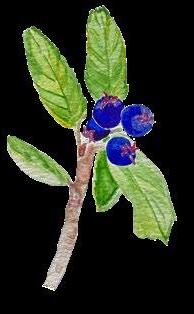
These upright berry clusters poke their red cones from their branches all year round.* The berries make a rare splash of colour in winter’s whiteout and they perk up into wet, sticky, ready-to-harvest berries by the fall.
Sumac has a naturally zesty citrus flavour. When I was a kid, we would pluck a few berries and see who could suck on one without making a funny face. Impossible. They were like sucking on lemons. In fact, sumac was used in place of citrus in Europe before the Romans introduced lemons. When you harvest your own sumac, soak it in water to release the acid and add a bit of honey to turn your berries into a sumacade (you will need to filter through the water twice to remove any dirt or furry bits). I personally like to dry my sumac and grind it into a spice. The beautiful speckles of red with a zip of tartness are a great way to finish a dish. *Not to be confused with poison sumac, which looks nothing like staghorn sumac.

From backyards to parking lots, this tenacious plant is immediately recognizable. Most consider dandelions weeds because they grow so abundantly and are a pain to remove, but once you realize their benefits to our bodies and taste buds, you may see them differently. Dandelions pop up in the spring, summoning bees out of hibernation with their early blooms. The jagged leaves are at their best when young and tender, and by late spring they develop yellow flowers and hollow stems (a stand-in for a straw in a pinch!). In the fall, dandelions that survived the angry gardener have bitter leaves and produce a second flower that can be used in teas, wines and salads. The long taproots, best harvested in fall, get sturdier as the seasons shift and those meaty roots can be roasted before steeping into a coffee substitute. Dandelions have been used to aid digestion, help treat UTIs and improve kidney and liver function.

Toronto-based Deirdre Buryk is the author of Peak Season: 12 Months of Recipes



Celebrating Ontario’s Freshest Ingredients, published by Penguin Random House Canada.





Southern Georgian Bay has gone from snowy season to sunny season, which means busy ski families like mine have switched gears from staying active on-hill to… well, more of the same but with greener scenery. Like most outdoorsy folks, our family gets our money’s worth out of a season pass pretty early in the ski season. If we aren’t at work or school, we’re on the slopes. This is great for filling up a winter but can leave some gaps in our family activity plans in the green season. My kids, my husband and I all have energy to burn, and there’s only so long we can last at the local playground before getting bored. Thankfully, our local ski hill is Blue Mountain, and it has a four-season operation that stretches the value of our season passes (and access to fun, outdoor activities) year-round. Here’s how we get the most out of our season passes as a fourseason outdoor family:
During the “off-season,” I don’t need to worry about keeping everyone’s ski equipment in order and can spend some time on-hill without much fuss. Some days I’ll flex my work day and go for a run or hike after kid drop-off at school or summer camp, and work my way up, down or across Blue on the hiking and cross-country biking trails. I’ll get up and get ready to run before the school bell to stay committed to getting my workout in. On days when I have a bit more time to relax, I might treat myself with a stop in at the Village to use my pass holders discount on a post-run snack.

We have programs scheduled often during the school year, and in the summer, we enjoy scheduling free time into our weekdays so we can
pop over to the mountain on a moment’s notice. We let the kids pick what they want to do, and they often opt for a family hike followed by a gondola ride down, which is also included with our 5x7® passes. I keep our family passes packed by the door with our snacks, water and knapsack, so we are ready to go as soon as the kids are home. Transitions are hard for kiddos, and the longer we take to get there, the later dinner gets to the table. The direct-to-hill-access we have with our passes is key. If you’ve ever had to wait in line for anything with your kids, you’ll be grateful you went with a season pass rather than relying on purchasing tickets as you need them.

Unlike the 5x7® winter access, pass holders have unlimited trail and gondola access in the summer. This was honestly a selling feature for us with a young family of kids aged three, five and eight, as our kids aren’t quite ready to do big hikes yet. Having access to the gondola means we can hit the family-friendly trails at the top of the mountain or hike up and take the gondola down (or even just go for gondola rides and enjoy the scenery for a change of pace). Additionally, as an avid trail runner, I love having access to all the trails all summer long to get my hill training and long runs in, close to home. The trail conditions at Blue are top notch, with carefully maintained steps and bridges. Available parking is a much-appreciated necessity, especially compared to some local trail access points.
When friends and family come to visit, it’s always nice to have the option to use our pass perks to score discounts on accommodation and dining. We have a big family with cousins of all different ages, but we know we can always find activities we all love together at the mountain.
With Blue in our backyard and a season pass in-hand, it isn’t hard to fill every season with play outside. Before we know it, it’ll be ski season again but for now, we’re looking forward to exploring the slopes with our hikers on and leaving the ski boots in the basement until next season.


Some days I’ll flex my work day and go for a run or hike after kid drop-off at school or summer camp, and work my way up, down or across Blue on the hiking and cross-country biking trails.TOP & BOTTOM BLUE MOUNTAIN RESORT. MIDDLE CAITLIN FOISY





LIFA INFINITY PROTM is our most innovative and sustainable waterproof/breathable technology to date, made without any chemical treatments. Developed with professionals around the world, to protect them from the elements while not harming the environment they work in.
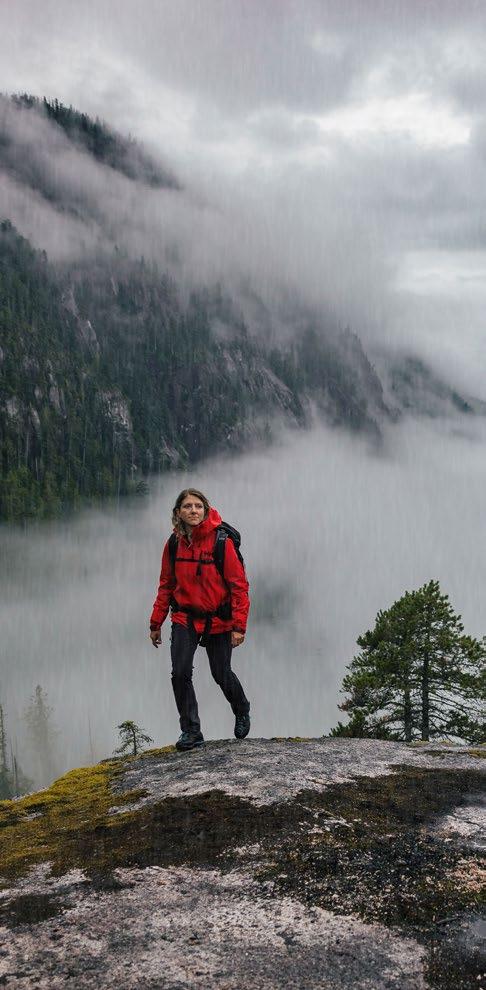

 words :: Kristin Schnelten
words :: Kristin Schnelten
Off a little-traveled gravel road, just a stone’s throw from the blacktop, three crisp white geodesic domes stand tucked into the top of a wooded hillside, overlooking a rolling patchwork of farmland and forest.

Each unassuming PVC-sheathed shelter, perched atop its decking foundation, belies its selfie-stylish interior—a bright, open space with kitchen, bath, sleeping, sitting and dining areas, all surrounded by a floor-to-ceiling, edge-to-edge wooded view.
“The massive picture window really makes you feel like you’re in the forest,” says Scott McIntosh, one of the four owners at Back Forty Glamping. Being immersed in the outside world, yet under full shelter, was exactly the experience he aimed for when he first conceived of the project.
Growing up in a small town, spending much of their summers canoeing the backcountry of Algonquin, Scott and his wife Elizabeth often struggled to get their friends on board with the Crown-land camping plan. “So many people would say, ‘It sounds like fun, but I just need electricity, or running water, or I’m just not into thunder boxes,’” he laughs. “But once they made it there, they’d always say, ‘This is so cool! Why didn’t I ever come before?’ And I realized I needed to bridge that gap, to get people into nature while still giving them the comforts of home.”
A late-night internet rabbit hole led him to the world of glamping. Popular in Europe for a while already, it hadn’t quite caught on in North America yet. But he knew it was the answer.
Teaming up with his brother Ben and Ben’s wife Alyssa, the two couples concentrated their property search in the Southern Georgian Bay area, where Scott and Elizabeth, natives of Arthur, had always planned to raise their family. The almost-40-acre parcel just south of Meaford
ticked all the boxes, including that killer view and a broad, tree-lined field for future domes.
It took longer than the six months they had envisioned—six years longer—but last spring they finally started swinging their hammers. “It was definitely a journey,” he admits, including a protracted period of red tape for their out-ofthe-norm construction project, and the added hurdle of clarifying their plans for a quiet, naturefocused space to neighbours hyper-concerned about partiers.
Finally, on September 1, they welcomed their first guests, and have been fully booked since. The drive to get away from your daily routine, even for a night or two, hasn’t diminished post-pandemic—the McIntoshes are set to begin construction on the fourth dome soon, with plans for four more the following summer.
“I don’t think glamping is a fad,” Scott says. “I think the outdoors never gets boring, never gets old. It’s always beautiful, always has something new to offer. That’s why we say to our guests, ‘Come in all four seasons.’”
“Yes, there’s mud in spring. But at the same time you see these little sprouts and you say, Wow, that’s new life, coming to be. The serenity and the silence sometimes in the blanket of snow in the winter is an incredible feeling in and of itself. Or you’re lying in the dome with snowflakes falling past the windows—it’s beautiful. And autumn is incredible, when the whole hillside is on fire. It can bring me goosebumps. ”
He isn’t just rattling marketing speak. The two couples are genuinely infatuated with their new community and their proximity to hiking, paddling, biking and climbing—and actively encourage their guests to explore as much as they can, using the dome as a base camp.


Although “camp” is a loose term. Beyond the bespoke interiors and chic accessories, they’ve equipped each dome with a private hot tub and teamed up with local businesses to offer complimentary arrival drinks and optional prepared meals in addition to romance, birthday and spa packages—toeing the line on the “glamour” side of glamping.
“The reality is, people are a little more pampered than they used to be,” Scott adds.
“They’ll say, ‘I can’t go to the bathroom if there’s not a flushable toilet.’ If that’s where you draw your line in the sand, I feel badly that you’re missing out on so many things. So maybe glamping is the lifeline to say, ‘You really still need this. I can give you the toilet, but you need to see what the outdoors has in store for you.’ That’s the passion behind it all.”
It took longer than the six months they had envisioned—six years longer—but last spring they finally started swinging their hammers.CHRISTY SPEERS

















“I have nothing to reconcile,” Tom Eustache says plainly to a room of 200 white people, followed by a small but exasperated chuckle into his microphone. A member of the Simpcw First Nation, Eustache has just been asked how non-Indigenous folks can help First Nations with reconciliation. His answer, softly and affably delivered, belies an inescapable fact: Reconciliation is a colonial burden, not an Indigenous one. And yet, when it comes to this fraught process, First Nations continue to come to the table.
In this case, that’s the biannual Mountain Bike Tourism Association (MBTA) symposium at SilverStar Mountain Resort in British Columbia, where Eustache is speaking on a guest panel. As a rider and a trail builder himself, he’s found common ground with everyone in the room—something that’s been elusive in the grander scheme of Canadian reconciliation. For the Simpcw and other Nations, trails have become a way to reoccupy their territory and bring health and happiness back to places clouded by the legacy of Canada’s residential school system—a brutal regime of cultural-assimilation-turned-Indigenous-genocide deployed by the Canadian government until the late 1990s.
To help heal his home community of Chu Chua, B.C., about an hour north of Kamloops, Eustache—as both the Simpcw’s public works manager and a volunteer—has been coordinating the construction of a growing network of trails in conjunction with the Indigenous Youth Mountain Bike Program (IYMBP) and First Journey Trails. The forest floor here is sandy and dry, the spacing between the pine and spruce ideal for sightlines, the hills rising in gentle gradients from the wide, lazy river that settlers named the North Thompson. It’s as perfect a place to ride fat tires as there is in B.C., situated midway between the storied freeride epicentres of Kamloops and Williams Lake. But, for the Simpcw, mountain bike trails aren’t just an amenity—they’re an invitation.
On the National Day for Truth and Reconciliation, only a few weeks after the MBTA symposium, a hundred riders gather in Chu Chua at the inaugural Allies Mountain Bike Festival. It’s an open call to come celebrate and enjoy the flowing lines the Simpcw have carved into their territory. Non-Indigenous riders with a mind toward reconciliation have travelled from all corners of B.C. and as far away as India. Riders from four other B.C. First Nations—the Squamish, Musqueam, Ucluelet and Wet’suwet’en—have gathered here, too, alongside Indigenous mountain bikers from Waterhen Lake First Nation on Treaty 6 territory in Saskatchewan and from the Navajo Nation in the southern United States.

“You’re next,” says Tina Donald, a Simpcw councilwoman leading the welcome circle as she systematically asks each individual to introduce themselves. It takes a while to make the full round, as even latecomers aren’t skipped over. On such an auspicious day, each of us must take the time to see and hear one another. A welcome song by drum follows, performed by Leon Eustache, Tom’s nephew, and then it’s time to ride. For the remainder of the day, all further formality is out the window. The purpose is simply to be together.
The crowd disperses towards the trailhead, just a few hundred metres up the road from the Neqweyqwelsten School, and disappears into the woods. Some load into shuttles, others choose to pedal up the Fish Trap climbing trail. The loops are short and gratifying; you can bang out multiple descents on trails that match the best in the province. Step It Up, with modern flow and well-calibrated jumps, proves a group favourite; Section Zero is similar but faster, with dirt that feels like Velcro; Section One feels more natural, with technical sections throughout.
The world-class network begs a simple question: Given what Indigenous people have lost to Europeans settlers and their descendants, why invite any of us when they could keep it to themselves? “To show everybody how we gather and how we share,” says Tom Eustache. “I can sit here and talk to you. And maybe because we’re together here in a different light, you can listen, and you’re able to hear. Because we just went for a ride, we have the opportunity to be calm, to sit down with like-minded things.”
Millar, whose irrepressible excitement commands every bit of his body language, says building trails and learning to ride has both lifted him from hard times and given him something to strive for.Gathering at the Simpcw network's trailhead, Terrence Yazzie, Tom Eustache, MT Garcia and others bask in sunshine and friendship between laps.





It’s such a generous answer it almost shames the question. But another part of it, Eustache admits, is that when you build something you’re proud of, you want to show it off. There’s an innate satisfaction in having people from the best-known mountain-bike towns in B.C. visit your trails and say, “These are awesome!”
“I hope you guys have fun here,” he beams. “It just has me so proud of who we are. That’s something I’ve been feeling more and more lately—proud of who I am and where I’m from. A lot of First Nations don’t get to feel that.”
Pride is also becoming a familiar feeling for Jay Millar, visiting from the Ucluelet First Nation. The Ucluelet, too, have been etching trails into their unceded territory, often resurrecting old hunting routes in steep, rugged rainforest where, as he says, “the ocean slams into the mountains.” As part of the trail-building crew, Millar confesses to being tugged at by an impulse to keep the trails secret, while also wanting to use them to reach more people. “It’s a bit of both,” he says. “Through education, one can hopefully move on from what was in the past. With more and more bikes coming out, it’s a necessity for our community—and a way to get Indigenous people on the land.”
Millar, whose irrepressible excitement commands every bit of his body language, says building trails and learning to ride has both lifted him from hard times and given him something to strive for. He grew up surfing, but is now saving to buy a carbon mountain bike to be better able to enjoy his own work and to explore his ancestral territory even further. It makes him feel connected, but moreover, it’s just a lot of fun.
The sentiment resonates with Chelsie McCutcheon, a Wet’suwet’en rider from Smithers, B.C., who notes that the very notion of Indigenous happiness was lost under the residential school system, torn away by the rigid crush of Christian absolutism and replaced by generational trauma. “Fun is a healing agent,” she explains, her daughter riding with other kids in the background. “For a lot of First Nations communities, there’s a sense of hopelessness—a whole that needs to be stitched back together. And it seems so basic, but having fun is a really big part of that.”
McCutcheon now lives in Squamish, where she helps run the Squamish Nation Youth Mountain Bike Program and has also been involved in the Indigenous Life Sport Academy. Depression, she recounts, is an ongoing scourge in Indigenous communities. But sports like mountain biking and snowboarding have helped keep her own head above water, and she believes they can build a foundation for generational healing.
“We’re in a place where, in modern society, it’s not appropriate to show you’re grieving. And so, when you have to hide that, you get stuck. But [on the trails], incantations of healing are embedded in that suffering,” she says. “It feels like your throat is burning, but it’s a different type of suffering. Back home, you’re grieving over death and tragedy, but suffering [through exercise] almost strips away that ability to talk down to yourself.”
While it’s true movement is a powerful agent for both mental health and physical well-being, McCutcheon is clear-headed about the fact that getting people moving is a whole other task. It takes infrastructure—like the Chu Chua and Ucluelet trails, which have become a model of cooperation. While governments at all levels continue

For everything that makes us different, there is much more that makes us the same. Give us two wheels and a hill to play on, and you’ll see for yourself.The Dalai Lama said, “A zero itself is nothing, but without a zero you cannot count anything; therefore a zero is something, yet zero.” Matt Coté investigates this claim on the Section Zero trail.


to flail at this task, mountain bikers are becoming good at it. The IYMBP and First Journey Trails—among other groups—have assisted dozens of northern and coastal communities in building trails. Of course, it helps that B.C. is one of the most desirable mountain-biking destinations in the world, with riding both a nearly universal part of the culture and a significant economic driver.

If B.C. has become ground zero for Indigenous-led trail development, it’s likely because of one thing: Unlike most of Canada, there are virtually no land treaties here, with almost the entire province remaining unceded. The same is true of Yukon, where the Tagish First Nation undertook a similar trail initiative in Carcross as far back as 2011, and now has a tourism amenity drawing thousands each summer to its trails, shops and food services. As First Nations develop their own networks, they can begin to share in those economic opportunities. According to the MBTA publication 2016 Sea to Sky Corridor Overall Economic Impact of Mountain Biking, which summarized studies of the Hwy 99 axis between North Vancouver and Pemberton, trails produced $70.6 million in visitor spending, $35.9 million in wages and $18.6 million in tax revenues that year—doubling the amounts from a previous study in 2006.
And the sport’s benefits aren’t isolated to Canada’s westernmost province. In the U.S., the Navajo Nation now hosts the monumentally popular Rezduro—billed as the world’s first Indigenous-led mountain bike enduro race—on a growing network of self-constructed trails.

Terence Yazzie and MT Garcia are visiting from the Navajo Nation to compare notes. Their sizeable reservation spans portions of three states—Arizona, Utah and New Mexico. Yazzie and Garcia advocate for trails within it. Garcia works to spread mountain biking to school kids, and over the course of only a couple years she’s seen more than 40 Navajo youth take up the sport.
“Myself and other trail builders, and people in the community advocating for cycling, are trying to build a safe space,” Yazzie says, acknowledging the discomfort that comes with trying something new. He was drawn to the sport at a young age, growing up mountain biking in Flagstaff, Arizona, with British racer Steve Peat as his idol. In Chu Chua, we see that influence in action: Yazzie rails corners with perfect bike-body separation, and still runs his brakes reversed (Brit style) in homage to his childhood hero.
Although reconciliation in the Canadian context is a new word to him, Yazzie well understands the concept. “I think it’s just sharing the cultural significance of all the people in the world, right? Like, because you’re not Indigenous doesn’t mean you don’t have culture. So then we get to share this with each other and build community.”
At this gathering, that notion of sharing plays out all day on the trails, but also at night by the campfires, where McCutcheon explains the significance of the potlatch—an Indigenous ceremony around giving and sharing meals—and how B.C.’s early colonial government banned it. Eustache likewise explains to Vinay Menon, from Pune, India, that Indigenous language in Canada was entirely oral, and was thus nearly wiped out by the residential schools. Menon is shocked to learn there were no scrolls, and recounts the tribal diversity of his homeland that persists largely thanks to paper records.

Coming into these exchanges with wholehearted curiosity is a tact that Sean Bickerton is interested in exploring. He’s a non-Indigenous resident of Squamish, attending the Allies Fest with his two young children. A natural resource officer for the B.C. government who works in Indigenous relations, Bickerton admits that the position—a form of law enforcement—has historically been an arm of colonialism. As such, he worries about being perceived as an enemy, but is continually blown away by the welcome he feels when he visits First Nations. It’s become important for him to normalize the feeling of “We all belong together” for his kids. “I wanted to step away from the work side and actually just come in the open, you know? The message of the Indigenous Youth Mountain Bike Program is, ‘Come in a good way.’ So I wanted to come together in a good way in a community I’ve never been to before.”
For Bickerton’s kids, the immersion part of the experience is the most compelling. It’s something you just can’t learn in school, where Indigenous people are too often only a concept. “We could have stayed in our home community for National Truth and Reconciliation Day, or we could come and visit this event as mountain bikers, and hopefully expose my kids to how this First Nation community works. To live and to learn, and to do it by bike. It makes an immediate piece that kids can relate to—a vehicle to come and absorb new information.”
Yazzie puts the culmination of that process on display at the festival’s close, with a bannock dinner and farewell ceremony at the school. Instead of piling inside, he and Tom Eustache’s pre-teen son, Theo, are rapt in doing skids, cutties and 180s against a grass bank. A dozen other riders join in, noodling on the impromptu feature, falling, laughing and making themselves late for dinner. Time seems malleable as everyone returns to a simpler state—childhood, in all its uncomplicated wonder. For everything that makes us different, there is much more that makes us the same. Give us two wheels and a hill to play on, and you’ll see for yourself.
Back inside, youth from the Squamish Nation pull Tom Eustache aside to present him with a carving as a gift, and Leon drums out a farewell song. He says a tearful goodbye to the group of mostly white mountain bikers, telling them his heart is big from seeing everyone on the territory. “Come back, come ride the trails again,” he says in his native Secwepemctsin, “and when you do, come say hello—weyt-kp.”
“That’s something I’ve been feeling more and more lately—proud of who I am and where I’m from. A lot of First Nations don’t get to feel that.”Leon Eustache sings a welcome song to a circle of riders newly arrived to celebrate Simpcw mountain biking and culture.

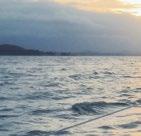



This isn’t Michèle and Véronik Bastien’s first rodeo as business owners. After creating PEPPERMINT, a women’s cycling brand, in 2015, the twin sisters set out to do things a little differently this time around. When they founded Parmi along with three local entrepreneurs (Luc Sabbatini, Maxime Boissonneault and Patrick St-Denis), they chose to venture off the beaten path: Their goal was to simplify the outdoor experience by offering products of outstanding quality that transcend what we’ve become accustomed to seeing in the market.

“We want people to be able to do more with the same product – and for a longer period – therefore deconstructing the fast-fashion model and breakingthecycleofoverconsumption,”theduoexplained.


Composed of premium essentials that are suitable for a multitude of uses and styles, the Parmi collection lies at the intersection where cycling, hiking, trail running, cross-country skiing, fashion and innovation converge to address the need for simplicity of consumers and the planet.
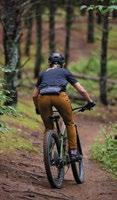

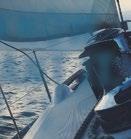



Founded in Mont-Tremblant, a city nestled in Quebec’s beautiful Laurentian mountains, Parmi was inspired by Canada’s exquisite natural habitat. And when searching for reliable production partners, the brand’s founders had specific criteria.
“We not only wanted access to the best fabrics, but also to the latest industryinnovationsthatwouldencourageustopushourlimitsandtake ourproductstothenextlevel,”theBastiensisterssaid.“Wewantedtowork withpeoplewho,justlikeus,haveatrulyearth-friendlyapproach.”
They found their perfect match in Portugal, where most of the collection is conscientiously produced, and where the brand’s strict quality and sustainability standards would be met.

With maximum durability always top of mind, the brand favours a variety of rich, versatile, and timeless colours versus the flashy hues that tend to be popular in the sports world but are not exactly the go-to option for a Saturday dinner.
“It’simportanttousthatpeoplecanwearour clothing whether for outdoor activities or in theirday-to-daylives,”thesistersadded.
But mastering the art of lifewear is no small feat. It requires carefully blending a casual look with refined technical features. Timeless. Casual. Multi-use. Sustainable. A breath of fresh air in the outdoor industry, Parmi offers premium, versatile essentials that simplify people’s wardrobes, and their lives.
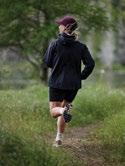
Parmi Lifewear.
A brand built for life. All of it.- Michèle Bastien - Véronik Bastien



 *Renderings are artist’s concept. E&OE.
A private collection of four-season modern towns, bungalows and singles.
*Renderings are artist’s concept. E&OE.
A private collection of four-season modern towns, bungalows and singles.











The Ogoki River is flowing fast, breaching shoreline cedars and boiling around Canadian Shield granite. Our laden canoes feel like bits of driftwood in the swollen torrent. On such a big river you only have one chance to pick the safest line to run rapids. With the canoe bobbing in a tiny piece of still water, I use my binoculars to study the whitewater ahead, searching for a route through the froth. And so we tiptoe down the belligerent river.
It’s the third day of a two-week expedition as part of the Ontario Breeding Bird Atlas. Whitewater thrills aside, the primary goal of this journey is scientific: We’re here to survey songbirds, raptors, waterfowl, shorebirds, owls and other avian species in a remote pocket of Ontario’s Far North, part of a larger endeavour—now it its third iteration—to tally bird populations across the entire province.
The project recurs every 20 years, to track changes over time. Citizen scientists and professional biologists are summoned to observe and quantify breeding bird behaviour in assigned survey squares, which measure one square kilometre in southern and central areas and 100 square kilometres in the north, over a period of five field seasons. Our mission is to examine a small chunk of the James Bay Lowlands, a subarctic wetland of sphagnum and spruce that’s home to remarkable biodiversity—and some of Canada’s wildest rivers.
My three trip mates include a Ph.D. ornithologist, a government biologist and a lifelong obsessive naturalist—all with expert birding skills and plenty of field experience on similar projects. It was obvious that I was recruited as the canoe guide. I assumed canoeing would be the easy part; as an aspiring birder, I was excited by the opportunity to fasttrack my bird ID skills and add some new northern species to my life list in the company of professionals.

To catch the birds’ morning chorus, we rise before dawn, guzzle coffee and navigate solo to preassigned GPS coordinates away from the river to conduct standardized “point counts.” These counts consist of listing the species observed (generally identified by their unique songs) in a five-minute span, as well as unique breeding behaviour such as nesting and adult birds transporting food to young. We also keep a running tally of general observations as we travel downriver to our next campsite.
Point counts offer the most robust data, and trekking up to eight kilometres through bogs and thickets is hard work. We’re each lucky to complete half a dozen counts during our morning time window. It’s no coincidence that the breeding cycle of Ontario’s migratory birds aligns with peak mosquito and blackfly season; clouds of blood-thirsty insects make our point counts feel like self-inflicted torture.
Bugs aside, as a rookie field scientist I’m astounded at how quickly I come to recognize the distinctive trills and melodies of various warblers, flycatchers, sparrows and thrushes. Our group tallied 105 species,
including rarities like Connecticut and Canada warblers, rusty blackbirds, olive-sided flycatchers, great grey owls and boreal owls—species that depend on untouched habitat for survival and are infrequently observed elsewhere.


The Ogoki eventually merges with the Albany River, Ontario’s longest waterway, which flows like a treadmill across the James Bay Lowlands. This vast landscape is subtle in its topography yet astounding in the way it supports immense biological diversity. The Audubon Society of Canada describes the area as the summer home for millions of breeding birds. Indigenous people, whose remote communities comprise the only human settlements in the Far North, refer to their home as the “Breathing Lands.” There’s no better description of a place that supports an immense array of life (including wolverine, woodland caribou and, farther north, polar bear) and whose peatlands make huge contributions toward regulating the planet’s climate by sucking carbon from the atmosphere and vaulting it away.
It’s a revelation for me to paddle and trek across this landscape by ear, recognizing that every subtle change in habitat has its own distinct soundtrack of birds. Equally stark is the realization that this place may soon change in the rush to extract “critical minerals” from the so-called Ring of Fire deposits, located just north of our route. I wonder if in 20 years, when birders return to repeat our surveys, they’ll encounter the same incredible abundance we observed.
This vast landscape is subtle in its topography yet astounding in the way it supports immense biological diversity.ABOVE Rusty blackbird. BELOW Canada warbler. MAXIME LÉGARÉ-VÉZINA











D: 705-606-1270





btrealestate2@gmail.com
brendanthomson.com
Chestnut Park® Real Estate Limited, Brokerage 393 First Street Suite 100, Collingwood L9Y 1B3


O: 705-445-5454
F: 705-445-5457
collingwood@chestnutpark.com
Most of us live in the moment or are preoccupied with what we intend to do in the next moment as we rush through our days. It takes the unexpected to make us stop and consider other moments. We are surrounded by them—they have been sculpted in a land shaped by the Ice Age, shaped again by climate change and written in the lost and discarded artifacts and detritus left by those who came before us. Occasionally, moments from those lives may be glimpsed by the discovery of a time capsule in a house foundation, a hoed garden, a ploughed field, a forest trail, a stream bed.
This happened recently for Ned Morgan, the editor of this magazine, when he found a spear point in the pebbly bed of a shallow stream in Meaford, 3,000 years after it was made. The person who made it was a distant descendant of hunter-gatherers with genetic roots in north-central Asia who crossed a land bridge between Siberia and Alaska and colonized the Americas at the end of the Ice Age, more than a hundred centuries earlier. When their descendants
arrived in the recently deglaciated region of southern Ontario, the land was covered by a spruce parkland, not unlike the treeline in northern Canada today, and home to mammoths, mastodons, caribou, grizzly bears and arctic fox, to mention just a few.
The descendants of those late Ice Age people had to adapt to continually changing environments of a new geological epoch: the Holocene. The epoch opened with a near-glacial environment caused by cold, dry winds off the wasting ice sheet, followed by a period of progressive warming when the parkland was replaced with spruce, then pine forests, then mixed hardwood forests much like today. Early in this period, water levels in the Lake Huron and Georgian Bay basins fell and then rose several times before falling down to the middle of their basins, becoming closed and saline. Then the climate turned wetter and Lake Huron rebounded to higher levels than today. At the peak of the warming period, called the Hypsithermal, the climate became much warmer than today. Shortly after this, the climate began to cool again and Lake Huron fell to its current level.
These climate shifts, with fluctuating lake levels and changes in the composition of the forests— affecting the distribution of

Fun
June 24 - The Last Waltz
A musical celebration of THE BAND
July 7 - The Western Swing Authority SUMMER THEATRE


Confessions of a Redheaded Coffeeshop Girl

July 11 to 15
One-Man Star Wars Trilogy - July 25 to 29

Tom Thomson’s Wake - August 15 to 19
July 20 and 21 - Daniel
Trio
July 22 - Matchedash Parish 12 of the country’s top blues and roots music artists
August 26 - Everyday People
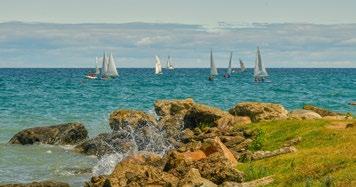
The Music of Sly and the Family Stone
September 9 - Hotel California
The Original Eagles Tribute
September 16 - The Fabulous Johnny Cash Tribute

September 23 - Brass Transit
The Musical Legacy of Chicago
For these great shows and so many more, visit:
mammals, birds and fish—required new adaptations from Indigenous peoples who depended on hunting and fishing for their livelihoods, drawing people to the interior of the lake basins as their levels fell, and then forcing them out again as levels rose.
Soon, cultural influences would replace climate change as a major player in the lives of Indigenous peoples, notably widespread religious movements reflected in burial offerings and mound building. At roughly the time the Meaford spear point was lost, mortuary offerings in cemeteries indicate that Indigenous people in Ontario had wide social networks involving trade, believed in an afterlife where they would wear adornments and use the tool kits buried with them, had strong spiritual connections with the animals they hunted and trapped, and may have believed in a spiritually animated world.
Other cultural influences sparked a transformation from hunting-gathering to food production with cultigens derived from Central America and the North American midcontinent. With food production came village life and the development of complex societies by the Ontario Iroquois (the Huron-Wendat, first along the northern margin of Lake Ontario, and later, in the Lake Simcoe/ Georgian Bay region; farther west, the Tionontati, or Petun, in the Collingwood/Meaford/Creemore area; and in the Hamilton area, the Neutral). Together with Algonquian-speaking huntergatherers such as the Anishinaabe, these are the people whom the European explorers, traders and missionaries encountered in the 16th and 17th centuries. With this contact began an existential threat to Indigenous peoples from disease, warfare, displacement from ancestral lands and Euro-Canadian suppression of Native languages and cultures, culminating in the residential school system—the most recent chapter in a sweeping story of resilience from the Ice Age to today.
These stories—prehistoric and historic alike—could have been swept away by time. They haven’t, but they are woefully incomplete—indeed, there are huge gaps in our knowledge. Rescuing them begins with recognizing the importance of chance discoveries, such as the spear point reported by Morgan, and asking what they might tell us and what else might be in the ground. Such discoveries could be rescued if reported in time, ahead of huge changes in our own environment from climate warming and the quickening pressures of urban development. They’re important for all of us in the truth and reconciliation process and for what they can teach us about the collective human experience. As you rush through your days, watch for the lifting of the veil that may reveal these stories.
Archaeologist and author Peter L. Storck is Senior Curator Emeritus, Royal Ontario Museum. His 2006 book Journey to the Ice Age: Discovering an Ancient World is essential reading for anyone interested in the prehistory of North America.

Nestled on the escarpment, The Highlands House offers a truly unique vacation experience. The stunning designer chalet, with breathtaking views of the Bay, is an ideal spot for those looking to escape the hustle and bustle of city life and indulge in outdoor activities. From biking to hiking, it is located in one of the primary hubs for outdoor enthusiasts in the region.
For gravel riders, some of the region’s top routes pass right by. Curated by local cycling connoisseur Jody Wilson, the Strave routes provide spectacular route options with incredible vistas, memorable valleys and scenic villages.
For Mountain Bikers, the Duntroon Highlands trail network is just a short bike ride away (access pass available from Collingwood Off-road Cycling Club).

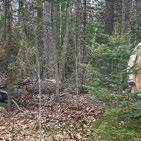

One of the things that set The Highlands House apart are the add-on experiences available, including a local ride guide, immersive escarpment discovery walks along the Bruce Trail, as well as a farm-to-table dinner by one of the celebrated local chefs in the outdoor long-table pavilion.


From sunrise to sunset, The Highlands House is a new, one-of-a-kind getaway for biking and hiking outdoor enthusiasts.


TheHighlandsHouse.com


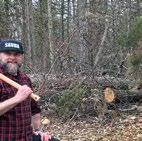
• Barrel, cabin, modern saunas available in wood red, electric and wi controlled electric

• Hot tubs
• Cold plunges

• Outdoor showers
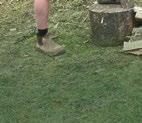
• Sauna accessories
e


is luxurious sauna is constructed with 2x6 knotty red cedar boards, black metal siding and roof, creating a modern space ensuring durability and longevity. Featuring large windows for stunning views, this sauna creates a relaxing atmosphere that is perfect for unwinding and enjoying the therapeutic bene ts of sauna. is sauna is available with an electric or wood red heater. Mention this ad when purchasing your sauna and receive a Moonlight Sauna gi pack.
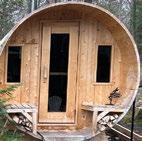

Be a part of an inspired enclave of semi-detached and single-family mountain homes.





Introducing the next phase of mountain homes nestled in the foothills of Blue Mountain. A community set proudly apart yet connected by nature, featuring private spa-like amenities. Distinctive architecture inspired by Georgian Bay cabins and mountain chalets.
This is everything you want Blue Mountain living to be. This is your Windfall.

 words :: Leslie Anthony
words :: Leslie Anthony
The Don River is no Amazon, but the valleys of the watercourse bisecting north Toronto were my first version of jungle exploration. When we moved to the suburb of Don Mills in the early 1960s, it was making waves as Canada’s first “planned” community. A paragon of organization, the ’hood the rest of the world would come to know from urban-planning textbooks was then a mosaic of newly minted housing, service hubs, undeveloped lots, pasture, grown-over orchards and deep, dark ravines where streams bubbled toward the coffee-colored Don. Green tendrils penetrated the concrete patchwork of curling streets from a towering forest of maple, oak and pine.
Indeed, at first, we dwelt on the edge of something approximating wilderness as a parade of displaced animal life was welcomed on our street by cheering throngs of children weaned on a steady diet of storybook critters. As the city grew around us, I spent more and more time in the valleys it engulfed, preserved in a forward-thinking series of interconnected parks like Edwards Gardens, Sunnybrook, Wilket Creek and Taylor Creek. These were the places to which my parents often took my brothers and I on family excursions. When time allowed, we were transported further afield to peri-urban conservation areas of the Toronto and Region Conservation Authority (TRCA), where we could see ecosystems known in bit and part functioning as a whole and in real time. School trips likewise made use of the TRCA’s fortuitous classrooms.
The heuristic value of such greenspaces to myself and thousands of others living in big-city suburbia cannot be overstated. Not only did I garner appreciation for the natural world, but also for the region’s post-glacial topography and hydrology—the deep aquifers that provide water for so many communities, the dendritic systems that carry the land’s runoff to Lake Ontario, and the mechanics of natural wetlands. One of the first things I remember hearing was how the TRCA was established in direct response to destructive flooding that occurred in and around Toronto during Hurricane Hazel in 1957, and that conservation areas were built around water-regulating systems in regional headwaters to ensure such flooding would never repeat (it hasn’t, and, in fact, Ontario’s unique system of conservation authorities is the main reason the province sees far less flooding than others). Decades later, I’d likewise take my own daughter to these same haunts to inculcate similar lessons.
In 2005, long after I’d moved away, I was heartened to hear how these manifold landscapes, waterways and set-asides, having been painstakingly stitched together by generations of governments and nonprofits, were added to key farmland in an officially designated “Greenbelt,” protected from development under provincial legislation by the Liberal government of Dalton McGuinty. But then, only 15 years later, I was equally disheartened to learn that this huge, progressive win for biodiversity, recreation, natural disaster-control, and climate, water and food security for almost a quarter of Canada’s populace is threatened by a Progressive Conservative government
that campaigned on not opening it to development.
This is a disaster of a different kind, and it behooves the people of Southern Ontario to understand what’s at stake.
Greenbelts aren’t a new idea, but Ontario’s is the world’s largest and most studied, containing some 2 million acres of protected farmland, forests, wetlands, rivers and lakes. That’s $9.6 billion in economic impact annually—$3.2 billion in ecosystem services alone, including $224 million in flood protection—representing 178,000 jobs. The wildland component, 721,000 acres of wetland, grassland and forest, contains 78 different species at risk. These irreplaceable natural assets both make the region more climate resilient and annually offset 71 megatons of carbon—equivalent to emissions from 56.5 million cars. The health of the Greenbelt affects drinking water, manages stormwater, helps prevent flooding and buffers against diseases and other natural stresses in times of drought. Greenbelt agriculture drives local economies: High-quality soil, favourable climate and proximity to Canada’s largest market see 4,800 farms—comprising 40 per cent of the protected area—produce a staggering diversity of local food and drink, including rare specialty-crop areas like Holland Marsh and the Niagara Tender Fruit and Grape Area. With more than 450,000 acres of farmland lost in Ontario since 1991, a permanently protected Greenbelt is essential to a reliable local food source.
Given this litany of benefits, it’s worth remembering how we got here. It began in 1973, when a first ecological building block, the 725-km-long Niagara Escarpment, was protected; in 1990, the Escarpment was designated a UNESCO World Biosphere Reserve comprising coastlines, cliff faces, talus, wetlands, woodlands, alvars, oak savannas, conifer swamps and others biodiverse habitats collectively containing more than 300 species of birds, 55 mammals, 36 reptiles and amphibians, 90 fish and 100 different specialinterest flora. Following the lead of citizen groups, the 125-km Oak Ridges Moraine was protected in 2001. Ontario’s “rain barrel,” the
moraine filters and recharges groundwater, feeding headwaters that ultimately provide drinking water for 7 million Ontarians. As noted, in 2005 Ontario officially created the world’s largest Greenbelt by conjoining the Escarpment and Moraine with close to a million acres of prime farmland. To mark the designation’s 10th Anniversary in 2015, Ontario conducted an historic review of four cornerstone land use plans and found the Greenbelt’s first decade was an unqualified success. So much so that in 2017 protection was extended to 21 urban river valleys and seven coastal wetlands connecting
Candy-coated as a land swap, Bill 23 removed 7,400 acres from 15 sections of Greenbelt and added 9,400 acres elsewhere. But the exchange appears to have no net benefit…

suburban and rural lands to Lake Ontario across the Greater Golden Horseshoe—one of the fastest-growing regions in North America. Up to 13.5 million people will live here by 2041, making it more important than ever to protect resources that provide for good quality of life.
As the Greenbelt passed its 15th year in 2020, public support had never been higher. But it wasn’t long before Premier Ford and Municipal Affairs and Housing Minister Steve Clark began softening up the target for what would become Bill 23, dropping bombs of intent to reverse their “hands-off the greenbelt” promises in the guise of a plan to build more than 1.5 million houses. Reaction was swift, widespread and overwhelmingly negative, as summed up by David Crombie, former Toronto mayor and past chair of the Provincial Greenbelt Council: “I am profoundly disturbed by the government’s proposed actions,” he said. “They won’t solve the housing crisis but they would make it harder to fix our existing [towns and cities]…
as well as protect the farmland and natural areas that sustain them… we’ll have more sprawl and much less local food and protection against flooding and the climate crisis.”
On November 21, 2022, an unlikely 125-strong coalition of community groups, farmers, urban planners, housing advocates, environmentalists, labour unions and healthcare workers released a damning seven-page statement revealing Bill 23 as a recipe for sprawl, a violation of federal-provincial agreements on land use, and a threat to everything from farmland to species at risk. Despite the unprecedented pushback, Ford’s plan to eat into the Greenbelt quietly came to pass in December 2022.
Candy-coated as a land swap, Bill 23 removed 7,400 acres from 15 sections of Greenbelt and added 9,400 acres elsewhere. But the exchange appears to have no net benefit: The compensation land comprises a small portion of farmland northwest of Toronto already protected under other mechanisms, and a series of publicly owned urban river valleys that cannot be built on anyway. Tellingly, it soon came to light in a joint investigation by The Narwhal and the Toronto Star that developers who’d benefit most from the proposal had donated large sums to Ford’s PCs.
Aside from broken promises and potential chicanery, the government’s turnaround on the Greenbelt was no surprise. Its anti-environment, business-at-all-costs agenda had already made it easier to build on wetlands, gutted conservation authorities (and, ergo, flood-control capacities), forced municipalities to open farmland to development, greenlighted a contentious sewage plan for York Region, began construction on the controversial Bradford Bypass, and made sundry energy policy decisions that will reduce the cleanliness of Ontario’s electrical grid. As noted by Ontario Nature, “What’s being snipped is the thoughtfully interwoven web of protections for our wetlands, woodlands and farmland that has been developed over decades. Years of hard work… is being rapidly unraveled under the guise of ‘more homes built faster.’”
According to every analysis, however—including by its own advisors—the government’s excuse of needing Greenbelt land to solve the housing crisis is manifestly untrue. The Ontario Greenbelt

Alliance points to a February 2022 report by the Alliance for a Liveable Ontario that shows municipalities across the Golden Horseshoe having already set aside enough land to build in excess of 2 million housing units—far more than the target of 1.5 million for the entire province by 2031. “Bill 23 undoes all we’ve learned about how best to manage urban growth. It will severely hurt municipalities, both their revenues and their ability to plan and design their communities properly,” said Anne Golden, former chair, Task Force on the Future of the GTA.
Not only is tightening the Greenbelt clearly unnecessary, it’s anathema to the reasons for its creation in the first place—connection and permanence.
“We have to avoid the idea we can take here and add there because these are unique, interconnected systems that affect everything from drinking water to biodiversity to the ability to farm,” says Edward McDonnell, CEO of the Greenbelt Foundation. “The idea of permanence needs to be reinforced so it gives certainty to everyone involved. If we look at other greenbelts around the world, the questions are always about cumulative impacts and why those lands were protected in the first place. Not all land is equal—whether to do with growing conditions or the headwaters of a particular water system. Different areas and systems in the Greenbelt are what they are and not replaceable in any meaningful way.”
Because the particular wetlands, woodlands, rivers and farmland that would be paved over for no good reason seemed lost in the media uproar, Ontario Nature has highlighted 10 unique places—including major wildlife corridors and thousands of acres of farmland, sensitive woodlands and wetlands—that will forever degraded or lost to Bill 23 (worth a look: www.ontarionature.org/greenbelt-lands-at-stake-blog/).
“The Greenbelt is a real point of pride to Ontarians, a strong emotional attachment that can vary by person,” says McDonnell. “For some it’s food and agriculture, for others the water systems, ravines or understanding the connection of headwaters to Lake Ontario, and, for still others, learning about the greater whole represented.”
As someone for whom all of the above resonates, I can only lament the lost opportunities for a new generation.
“Bill 23 undoes all we’ve learned about how best to manage urban growth. It will severely hurt municipalities, both their revenues and their ability to plan and design their communities properly…”A rally against Bill 23, Ajax, Ontario, November 2022.














On a summer Thursday night in 2022, the crowds gathered after a ride through the property of Highlands Nordic. Sponsor tents were up, pizza was available and beer was selling for $5 a can. Adults and kids stood around in bike helmets, chatting, laughing, high-fiving and shaking hands. It was a friendly scene. And when the raffle for prizes got off the ground, it seemed like everyone won something. The bi-weekly CORC (Collingwood Offroad Cycling Club) ride is a relatively new tradition for Collingwood mountain bikers, but it’s one that has taken a serious hold on the community. We caught up with CORC president Peter Glassford for the scoop on what it’s all about.
Mountain Life: What is CORC?
Peter Glassford: CORC sort of has two arms. We have our trail marking, development and maintenance arm. The marking is a big thing we try to emphasize in Collingwood. The two properties we’re working on now are marked trails. Marking trails is important, as well as making trails that are accessible, in terms of green-level trails. In the future we’re also hoping to address wet-weather access and trails that are easier for kids in the Collingwood area. Then we have the events arm which largely runs Thursday night socials on alternating weeks through the summer.
ML: Why did CORC start?
PG: Those two arms are kind of a big piece. We started around that Thursday night ride.
I was at the table and some of our current directors and volunteers just wanted to get something together to get people riding at all different levels. We wanted to share mountain biking, share trails and then try to start something where newer riders could ride in a social way. Our vision is really connecting our communities through trails. We say communities with an “s.” Each social is sponsored by one of the bike shops— they’re super-supportive.
ML: On which properties do you have trails?
PG: We have marked trail systems at Highlands Nordic that also include Duntroon Highlands Golf—we think of that as the Highlands cluster. We also have trails at the
Craigleith Ski Club, starting at the Comet Express. Right now there isn’t a huge amount of trail, but the goal this year is to get a climb trail to the top. Then the plan is to have three trails of different difficulties. We’re hoping to have it complete mid-July. We had a climb trail, and three trails down sort of midway last year, so we’re hoping to build out the marking, the awareness of it and to get people biking it and then finish the trail to the top. That’s really setting the stage in future years to expand hopefully. I can’t say we’ve gotten any commitment from other ski resorts; hopefully they’ll get on board and we could get access to Loree, you know, things like that. So we could offer a climb trail from town.
ML: Can anyone ride those trails?
PG: The idea is that with a $50 CORC membership, that gives you access to our marked loops, our socials, our year-end events. So with your CORC membership, you can access those two parcels of land. They are private, so you would technically be trespassing without a CORC membership.
ML: How many members are in CORC?
PG: In 2022 we had 750 members, the year prior was 838. As with most things in the cycling industry, I think we hit a boom phase there in 2021 when everyone was home. I consider 800, plus or minus, as sort of where we’re at. Honestly, this year I’m forecasting similar to last year, maybe lower again as people start traveling.
ML: That’s huge.
PG: Yeah, we’re entering year six, and three of those years were pandemic; it escalated quickly. Mountain biking is popular and we’re family-focused and there’s no competition. We don’t time stuff, not that we wouldn’t do a funduro or something, but we don’t. I come from a racing background and you forget that people just go out on a Saturday for an hour and that’s their mountain biking. I think that’s why the Thursday night social is so successful; you can ride for 20 minutes or some people will come and ride for two hours. Everyone gets to hang out after it all. You can bring your family.
ML: Is everyone a volunteer?
PG: Yeah, we have two paid admin staff but everyone else is a volunteer. We also have a grant from the Ontario government for high school and university students and that’s how our trail work is getting done. I think we hire six high school and two university students, so we’ll have eight. The great thing is that it’s pretty much completely from the grant. It’s putting kids to work, giving them skills, getting them in the forest, and this year it’s a great boost to our trail quality. We’re not building a ton more trail; we’re really focused on the quality and marking.
ML: That’s cool. Are those full-time jobs?
PG: Yes. Our trails director Erik Lehmann is a local high school teacher and he wears so many hats. He runs the high school team and he’s also our trails director. He’s been the driving force behind getting that grant and getting kids to work. My understanding is that it’s a 40-hour-a-week commitment.
ML: How can people get involved?
PG: We’ll be looking for trail volunteers and for everything we’ve talked about, whether it’s mapping, designing our signage, helping with admin work. We have a volunteer form on the website, and people can certainly get in touch there. Things like administrative and legal, any professional skills will certainly be valued when we get into conversations with other user groups when we’re in need of contracts or just legal advice.
ML: Is trail advocacy a priority?

PG: The advocacy arm has come to light over the last year to six months, and is going to increase and be another big element of what CORC does. As part of this arm, we have a landowner relation director. I could also see adding an advocacy director next year. All these things require meetings and letters and conversations.
ML: What’s the future for CORC?
PG: Because of that growth being so quick, and we’re in this post-pandemic stabilizing period, this year we’re really focused on quality. Really nailing our marking of the trails, making sure Craigleith and Highlands are places that you might go on a Saturday instead of Three Stage. We’ll have a couple downhill-traffic-only trails this year, but we’re really focused on quality with trails, quality with events. Two, three, five years out we’ll work on quantity.
ML: Anything else we should know?
PG: The schedule is up on the website. There’s a ride every alternating Thursday, but there’s access to the two private properties, with green or blue marked trails. Those are available every day of the week, whether you are interested in the events or not. There’s also a big ride on a Saturday in September. We call it Stick a CORC In It; that’s a fun one and we get access to a couple other private properties just for those days to do a big 50-60-km loop starting from Highlands. That’s how we cap off the year.
For more info check out www. collingwoodoffroadcycling.com or @collingwood_offroad.
The Benno Boost, with Etility® Design, is up for anything and able to carry more than 3x the load of a typical bike. Flatten hills and shorten distances with the industry leading Bosch mid-drive electric motor and dual battery option, delivering unrivaled performance with up to 160miles of range. The award-winning Boost is many bikes in one, with a smart, interchangeable rack and rail system that lets you pick and choose from dozens of possible configurations to suit the mission and your lifestyle.
www.bennobikes.com

Four unique, comfortable suites for short-term stays for up to 16 people and a small retail bike/ski repair/rental shop




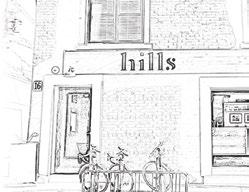
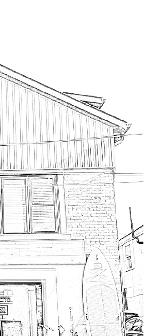
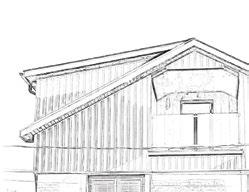
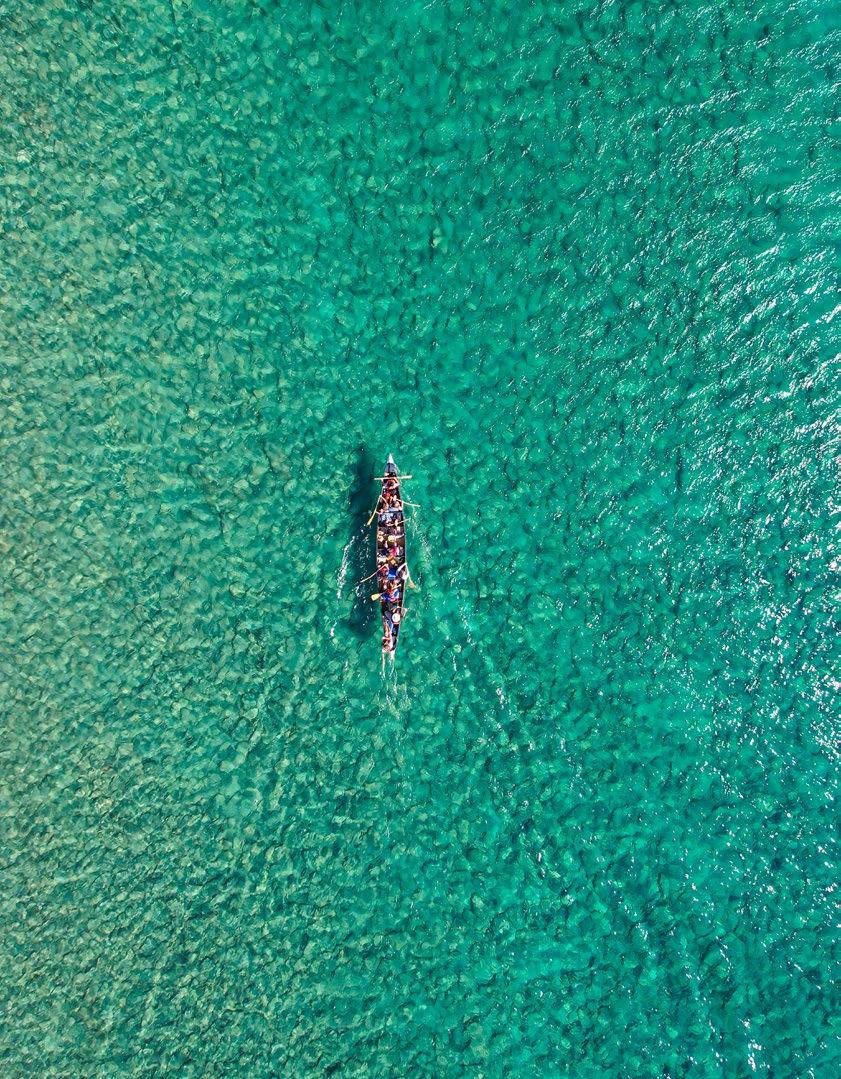
When I was 19 years old, I was a deckhand on the Laurie E. commercial fishing tug that docked at Thunder Beach, Georgian Bay. Captained by Bernard LePage of the Georgian Bay Métis community, we harvested whitefish primarily but also walleye, chub and lake trout.
That period of my life had a profound impact on me. I experienced wonders on the Bay that only a fisherman encounters, including a rendezvous with a rare northern puffer near Double Top Island and a massive sturgeon northeast of Giant’s Tomb. I also learned how much the Great Lakes are shaped by human impact and saw firsthand how we’ve decimated the natural order of species in the region by not only altering their environment but by overfishing and then dumping non-native fish stocks into the void.
Harvesting so many fish from the Bay while working on the Laurie E., I wrestled with an inner conflict. But I also acknowledged the transience of my experience; I needed to go through a process while learning things I wouldn’t have known otherwise.
I met Elder Justin Johnston of the Chippewas of Nawash Unceded First Nation one evening last summer at Cape Croker Park, Neyaashiinigmiing, in a big canoe. Justin and I shared the glassy paddle across Sydney Bay with four others: Tom Thwaits, founder of the Big Canoe Project; Miingan and Christopher Akiwenzie, brothers from the Chippewas of Nawash; and Jim Stinson, postdoctoral fellow at York University.
The evening event was organized by the Bagida’waad Alliance, in partnership with York University and the Big Canoe Project, to facilitate land and water-based learning experiences for youth within the Saugeen Ojibway Nation. That night Justin spoke about his plan to complete a ceremonial paddle around the Neyaashiinigmiing Peninsula to fulfill the vision of his late friend, Elder Marshall Nadjiwon.

A commercial fisherman, traditional teacher and visionary, Marshall once said: “The air, the earth and water—our people will never survive without it. These are our medicines. The trees, the animals teach us. The water teaches us; the fish. That’s our job, to look after these things.”
“This canoe journey is to help with the vision of Marshall and Justin, doing a healing for the community,” Chris explained. “Putting medicines down along the shoreline, and prayers for the water, the land and the people.” This would be a group effort, steering the big canoe and supporting Justin while he placed his prayer bundles for the community and for the whitefish.

“At first we thought of walking, but that would have been quite a long journey on foot,” Justin explained. “My brother was 74 and I’m pushing 70. When Marshall left us, I wasn’t able to do anything after the loss because he did carry a lot of knowledge.”
“After Marshall passed away,” Chris added, “Justin was alone on this journey and I told him he should ask my mother Natasha Akiwenzie at the Bagida’waad Alliance because we could bring people in and help organize this.”
Departing from Sandy Beach at Neyaashiinigmiing and making landfall in Hope Bay, the 45 km journey would take two full days, and with Natasha’s coordination efforts ten paddlers assembled to launch the big canoe. Chris paddled in the bow. Dylan White, Mia Toose and myself were positioned behind him. Elder Justin was in the middle of the boat with Natasha, Miingan, Caley Doran and Peter Mitchell seated behind him. Tom Thwaits commanded the stern, seated half-cheek on the gunnel while handling the 29-ft boat with ease. He guided us into shore where we worked collectively to stabilize the boat and disembark one at a time.
“People think this is an easy road to walk. I can assure you it’s not.”

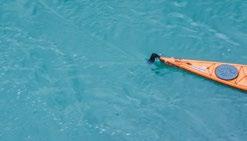




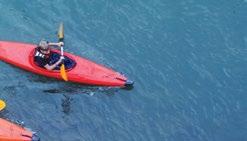
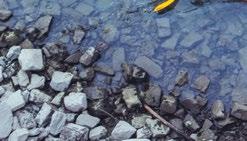
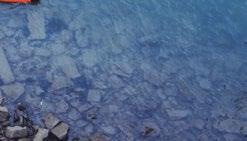






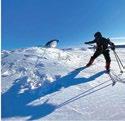
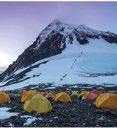

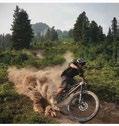
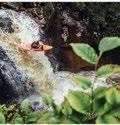



“I know Marshall will be with us. We may not see him, but he’ll be there in spirit,” said Justin. “We stop in certain areas where it is sacred and very powerful. I’ll be taking my pipe out and doing the offerings for the whitefish in the water. In times like this when fish are gone, we have to look at alternative ways to bring them back.” Then he added, “I remember a long time ago when people fished, they fished only for what they needed.”

Since the early 2000s, fewer young whitefish have been making it to adulthood. Overfishing, non-native fish predation and loss of shore ice in winter are the main reasons these native fish populations are struggling.
With the help of his brother Miingan and the crew, Chris assisted the Elder by preparing prayer flags and securing them in place (one for each cardinal direction along the route) on the branches of cedar trees. We slept on the shores at Cove of Cork where Justin conducted a sacred fire for Marshall. Half of the crew stayed awake that night, assisting with the fire. Justin shared his teachings until sunrise.
Something I’ve learned from this journey is that out of gratitude emerges reciprocity. Out of reciprocity, gratitude ensues.
I am gratified for those early experiences on the Bay on the Laurie E. and also to those whitefish we took that fed the community. Thankful for this experience shared in the big canoe with this group of people. All hands gathered to endow Justin's prayers, to feed the spirit of the whitefish. As he and Marshall intended.
“People think this is an easy road to walk. I can assure you it’s not,” Justin reflected. “That’s why these things are important. They have to be done with respect.”
Meanwhile, in that big canoe he kept our hearts full of jokes and laughter. That laughter was medicine. “I am grateful to have been able to fulfill this for my brother,” he concluded.
It was a successful journey by virtue of many hands, from the shore support to the paddlers and organizations that came together to support the endeavour. We were all guided by the spirit of a visionary, Marshall Nadjiwon, his acknowledgement of the whitefish and his prayer for their sovereignty in the Bay





We’re a local team that manages vacation rentals in the Blue Mountains. When you book direct with us, you pay lower fees & receive great service.


For a limited time, visit propertyvalet.ca and use code BOOKDIRECT10 at checkout for 10% off your stay.





BLUE MOUNTAINS
LUXURY. WELLNESS. WILDERNESS.
EXCLUSIVE LUXURY WILDERNESS RETREAT NATURE & NURTURE CURATED EXPERIENCES INCLUDED


2 PRIVATE LAKES ON 1,000 ACRES IN NOMININGUE, QC

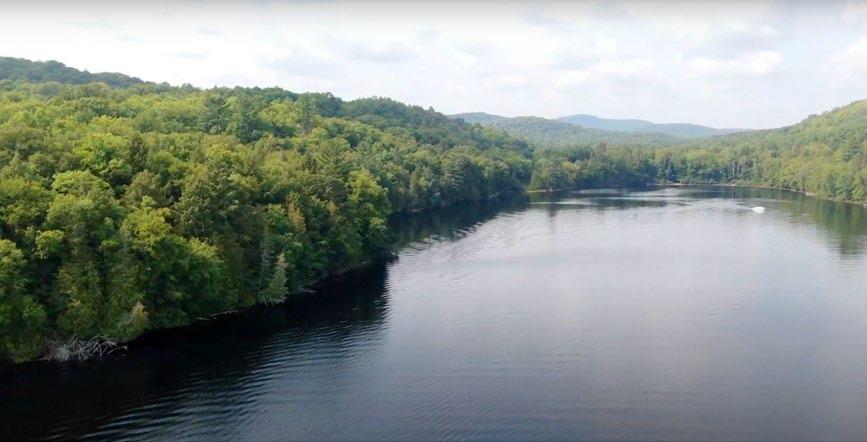
WWW.BLUEVALLEYSOUTH.CA

 222 Chateau Ridge
27 Snowbridge
310 Cachet Crossing
213 Sierra Lane
222 Chateau Ridge
27 Snowbridge
310 Cachet Crossing
213 Sierra Lane
orchard side in Clarksburg, online or at LCBO + fine bottle shops.







@spydistillery spydistillery.com

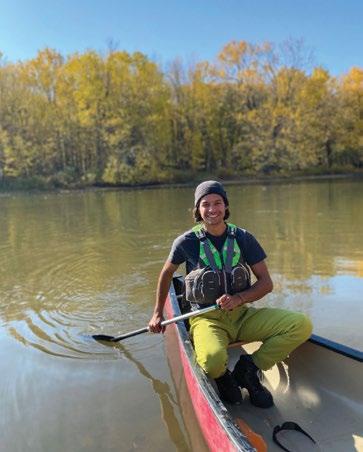
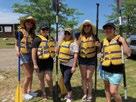
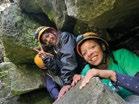


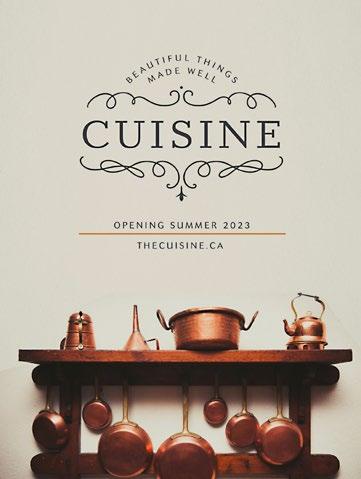

Kathryn Corbiere didn’t set out to become an artist. She first became a welder with the intention of establishing herself in the trade. But, as good welding jobs are few and far between where she lives on Manitoulin Island, she began doing commissions for architectural pieces and modern furniture. “From there, I found the opportunities and the abilities in myself to create art,” she says.

Corbiere’s installation artwork has been in great demand over the past five years, winning calls for concepts from the City of Owen Sound, the Town of Collingwood and the Toronto Stock Exchange, to name a few. At the moment she is excited to be working on a piece that will sit on top of the Niagara Escarpment at Blue Mountain Resort (BMR).
Set to be unveiled on National Indigenous Peoples Day (June 21), the installation is the result of a call for submissions put out on that day last year. When BMR’s parent corporation, Alterra Mountain Company, made funds available to all its properties for art installations highlighting an aspect of the local community, BMR decided to limit their call to Indigenous artists.
“We wanted to go further down the road of informing visitors about the heritage of this property, this land,” comments Tara Lovell, public relations manager for BMR, which sits on the traditional territory of the Anishinaabek, Haudenosaunee, Wyandot and Wendat peoples. The year previous, BMR prominently installed a landacknowledgement monument at the summit, highlighting the need for reconciliation. And Ojibwe language has been integrated into the interactive mountaintop installation Agora: Path of Light.
Limiting the initial call-out to Indigenous artists was not a foregone conclusion. “There is that gut hesitation of, Do we do it? Because we didn’t want to mess it up,” admits Lovell, who is not of Indigenous heritage. “And yet that shouldn’t hold us back from doing something great,” she reasoned.
Cognizant of this vulnerability, Lovell consulted with Indigenous advisers to make sure BMR was on the right track. The panel judging submissions ultimately included representatives from BMR as well as from the Indigenous community.
The piece, provisionally titled Elevate, is set to be installed in a prominent clearing at the crest of the escarpment, just south of the Silver Bullet chairlift (the Open-Air Gondola in the summer). At about 20 feet high, it will be the biggest work Corbiere has completed to date. Elevate has, in fact, doubled in height since her initial submission.
For Corbiere, location is important. “I’m such an avid outdoor enthusiast that to have a piece that sits out in nature, on top of the Bay like that, it means a lot,” she says. Corbiere also feels a personal connection to the Collingwood/Blue Mountains area because it’s her wife’s hometown. “She grew up snowboarding at Blue Mountain. I’ve come to know the area pretty well,” she says.
Slightly daunted by the scale of the work at hand, she is nevertheless itching to begin fabrication in her spartan shop, one KWE ("one woman") Modern Fabrications, located in M’Chigeeng First Nation, a small town at the end of a deep bay in the heart of Manitoulin Island.
Corbiere has all the steel sitting on a trailer in her yard, ready to go, but is awaiting the final engineering stamp of approval on her design. That’s the fourth-last step in a long process involving research, consultation with Elders, sketches, graphic design, material procurement and engineering approvals, followed by cutting, welding, grinding, mechanical fastening, polishing and powder coating—not to mention transport and installation.
“It’s quite the process even before you get dirty and get building,” she laughs. “I pride myself on doing all the work on my own: ordering the steel, driving the trailer to the steel depot, hauling it back, moving it around.” Corbiere uses her CNC plasma cutter for most of the cutting, then gets to work grinding and welding.

Because she likes to start off with a strong foundation, Corbiere mulled over a concept built of pillars for the BMR submission.
“Immediately I thought of the Seven Grandfathers teachings,” she explains, referring to the Indigenous guiding principles of character: love, respect, bravery, truth, honesty, humility and wisdom. But, she adds, “There are so many meanings that we can integrate into these seven strong pillars that are attached to the Earth.”
Corbiere speaks of designing a mountain shape that acknowledges the location it occupies, and the territory. “The seven posts kind of look like a wigwam or a teepee. It has that shape; it’s kind of encompassing everything into that space, but open so that there are no walls holding people out,” she explains. “It’s meant to be interacted with, a welcoming place for all to reflect.”
Because this piece will be too big to test-erect in her shop, Corbiere will have to trust the drawings and hope for accuracy when it’s craned into place at BMR. The pillars will be lit at night, beckoning visitors on their way from the gondola to Agora: Path of Light.

She’s especially satisfied that her installation will be seen by so many. “There are so many tourists in the area that are nonIndigenous, of all cultures, that explore Blue Mountain,” she adds. “That we can communicate our heritage to them on the Indigenous land is a big plus. I appreciate that organizations such as Blue Mountain are making an effort at Indigenous inclusion.”
Stay tuned for updates on Corbiere’s Elevate installation by following @bluemtnresort. To learn more about Corbiere and her work, visit www.onekwe.com
“It’s meant to be interacted with, a welcoming place for all to reflect.”RENDERING COURTESY BLUE MOUNTAIN RESORT








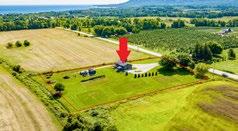











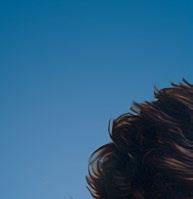



















DESIGNED FOR THE GREAT
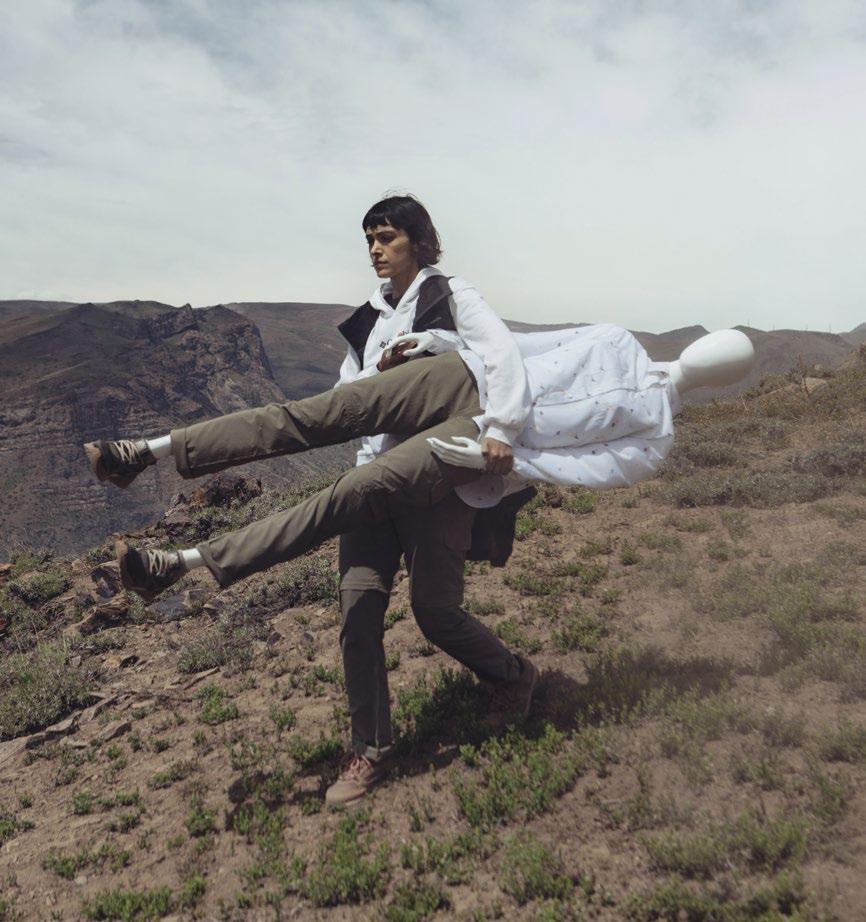



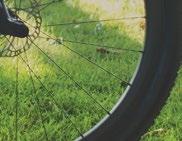

























1. The new G-LIGHT TRAIL E-BIKES from GASGAS offer a lighter, playful, super-agile ride. With a slightly smaller motor and battery tucked into a super-lightweight carbon frame, every crucial ounce is saved to keep this ride feeling as close to an analog MTB as possible. www.gasgas.com // 2. The BLU WAVE ARMADA line boasts proprietary Thermo-tech construction: a tough outer ABS skin over fibreglass and a foam core. The 11.6 Touring model is designed to cut through chop and waves with its pointed nose and is stable enough for beginners. www.bluwave.ca // 3. The BASE CAMP MULE by THE NORTH FACE is their first shoe to incorporate principles of circular design. Made with fewer parts and materials, it’s designed so consumers can return the shoe when they’re done with it. www.thenorthface.com // 4. The YETI LOADOUT GOBOX 30 has two new siblings, the 15 and 60, each featuring its own configuration of interior storage. Whether it’s camera equipment or fishing tackle, if you’re travelling with something that shouldn’t get wet, dusty or lost, pop it in a GoBox. www.yeti.ca // 5. The sustainably made LIGHTSOME WANDER JACKET from JACK WOLFSKIN, available for men and women, keeps cool spring weather at bay. It’s windproof, water-repellent,, breathable, quick-drying and boasts six pockets so you can keep your hands free. www.sportinglife.ca

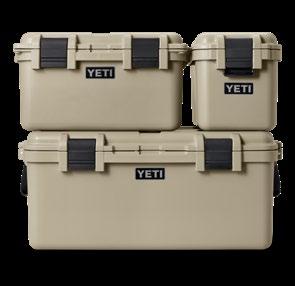



6. Upgrade your style on the trail with these unique women’s PEPPERMINT MTB OVERALLS, designed to keep everything in place even on your gnarliest rides. Featuring high-quality woven, 4-way stretch, water-repellent fabric, zipped chest pocket, elastic ankles and side zipper opening. www.skiisandbiikes.com // 7. Weighing in at less than 100g (size M), the RAB CINDER PHANTOM JACKET is featherlight, ultra low-volume and offers waterproof protection in a tiny packed size. Its streamlined design keeps features to a minimum to reduce bulk, while the stretchy Pertex Shield fabric is breathable when you’re pedalling hard. www.rab.equipment // 8. The KEEN WK400 WALKING SHOE with Keen.Curve technology balances plate technology, curve geometry and last shape with a high-energy midsole to give you the feeling of forward momentum. Available for women and men. www.keenfootwear.ca // 9. The new BENNO 46ER is reshaping the future of the e-bike, with 26” wheels in the front for extra comfort and control, and 24” in the back for strength and a lower centre of gravity. Powered by the Bosch CX/Speed motor and a 500Wh in-tube battery. www.bennobikes.com // 10. WEBER MASTER TOUCH



PREMIUM reinvents the classic charcoal grill with its perfect searing power and effortless smoking abilities. New features include a convenient hinged lid and charcoal ring for efficient fuel consumption. www.weber.com


FIN D YOURSELFINNATURE. Just a few minutes from Collingwood in one of Canada’s18 UNESCO biosphere reserves, are 370 unspoiled acres of mature hardwoodforest Weare here,high atopthe NiagaraEscarpment, wherean incrediblecollectionof experiencesandmemories waitsforyou, andforevery memberofyourfamily. ABreathtakingWorldofAdventureinNature!


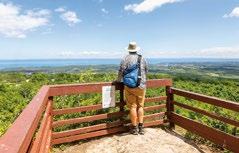


11. Lightweight and packable with a water-repellent (DWR) finish, the unisex PARMI DEPANNEUR CAFE ANORAK boasts great breathability to enjoy the climb and still be comfortable on the way down. Also: Wear the men’s BRIDGE SHORTS long or cuffed, in the mountains or the city. Made of water-repellent, UPF 50+, two-way stretch and abrasion-resistant advanced ripstop weave fabric. www.parmilifewear.com // 12. Made from western red cedar, the highly efficient PANORAMIC BARREL SAUNA has 1 ½″ thick walls and offers plenty of space for multiple bathers. The panoramic window will frame your beautiful view perfectly on your property. Available in woodfired or electric with Wi-Fi. @MarkhamWorks // 13. The all-terrain, ultra-grippy COLUMBIA FACET 75 (available in regular or mid-cut) offers flexible comfort, primed and ready for variable terrain. The Outdry waterproof/breathable construction means you can hike in any weather. www.columbiasportswear.ca // 14. The new NORCO FLUID



FS A1 is built to tackle whatever trail leads to becoming the rider you want to be. Its 130mm travel is precisionengineered, pairing custom-tuned suspension components with 140mm fork travel and boutique-level fit and finish for maximum trail performance. www.littleeds.com // 15. Versatile and durable, the award-winning HELLY HANSEN

ODIN 9 WORLDS INFINITY SHELL JACKET returns with a major tech upgrade. The waterproof/breathable LIFA Infinity membrane is engineered to give you everlasting performance without the use of chemicals—a win for you and the environment. www.hellyhansen.com
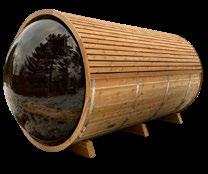



16. The foldable MICRO SPRITE LED SCOOTER is incredibly durable, holding up to 100 kg. LED wheels at the front and rear give this high-quality scooter some extra flare. Suitable for kids 6 and up and adults. www.mindsalive.ca // 17. Taking their ultralight platform and going even lighter, the OSPREY EXOS/EJA PRO 55 thru-hiking backpacks rely on featherweight NanoFly fabric and an essentialist approach to features to deliver remarkably comfortable, durable and capable packs that weigh in at just under one kilogram. (The Exos is for men, the Eja for women.) www.osprey.com // 18. The DEVINCI HATCHET CARBON GRX RX810 is a versatile, fun-igniting platform that merges off-road DNA with a moonshot mindset that shreds Strava gravel, brings the party to Grinduro and even plays nice on pavement. Its MTB-inspired geometry includes a longer top-tube and shorter stem for enhanced handling on loose, technical terrain. www.smittysbikeshop.com // 19. Cruise over slick rocks and mud with the ROSSIGNOL SKPR waterproof hikers. Available for women and men, they feel light and supple, with plenty of traction and support for tackling tough terrain. www.rossignol.com // 20. SIDE LAUNCH BREWING CO. NORTHBOUND LAGER is light-bodied, well-balanced, uncomplicated and highly drinkable. Its mild peppery aroma has a light graininess with a subtle sweetness. www.sidelaunchbrewing.com // 21. Cap off an epic adventure or make a holiday celly memorable with the refreshingly crisp and clean SPY GOLDEN EYE PREMIUM DRY APPLE CIDER. Made with the best ripe Blue Mountains apples, it's fresh-pressed on-site with no added sugar. Available at select fine shops or on-site at www.spydistillery.com // 22. THE COLLINGWOOD BREWERY LAZY BEAR BLONDE is a traditional German-style, lagered ale brewed in collaboration with Kuma Outdoor Gear. Kick back in your camp chair with this easy drinkin’ blonde ale! Available at LCBO. www.thecollingwoodbrewery.com






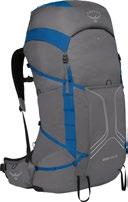













1. NAME RECOGNITION
RE/MAX is the No. 1 name in real estate* thanks in part to decades of extensive advertising. At just about every turn, potential clients find RE/MAX ads – across TV, radio, print, outdoor signage, the Web and social media. Chances are, you would have a hard time finding someone who has never heard of “RE/MAX.”
2. UNRIVALLED EXPERTISE
Our experienced and knowledgeable agents are the reason RE/MAX is consistently ranked number one in several markets across Canada. We provide our agents with exclusive tools to ensure they have the skills they need to effectively guide
you through the real estate process. Our office motto is Honesty, Knowledge and Goodness. Each RE/MAX at Blue Realty employee, sales representative or broker must live up to those three words.
3. CUSTOMER SATISFACTION
The proof of quality service is in repeat customers and in customers who refer RE/MAX at Blue Realty team members to friends. RE/MAX at Blue Realty sales representatives and brokers typically generate a large percentage of their business from past customers and referrals. Our team is trusted and experienced.

4. LOCATION – LOCATION – LOCATION
The RE/MAX at Blue Realty office is located in the heart of The Village at Blue Mountain right beside Starbuck’s. More than then two million visitors walk past the office window each year. They don’t drive by at 60 kilometres per hour. They WALK past our window and review the listings prominently displayed. Why not put your home in our window?

5. RE/MAX AT BLUE REALTY WEBSITE

Just type “Real Estate in Blue Mountain” or “Blue Mountain Real Estate” in any search engine and the RE/MAX at Blue website consistently appears in the top 2 organic (unpaid) searches. That’s marketing power to help sell your home faster.

List your home with a trusted RE/MAX at Blue Realty sales representative or broker.






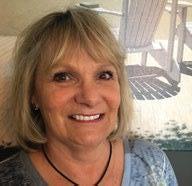


Like many of us, I lived a good chunk of my 20s out west, tallying up 100-plus days on the hill each winter and spending more summer nights under the stars than not. Young and determined, I knew I would spend the rest of my life in the mountains.
Then, edging close to 30, my resolve unexpectedly crumbled. The human need for family is strong, and indeed I missed my Granny somethin’ fierce, but it was another primordial necessity, a yearning so intense yet so deep I could hardly grasp it, that broke me: I needed water. Sparse pinyon-pine deserts and barren reservoirs left me parched, and I was desperate for the endless lakes and towering hardwoods of my youth. I wanted—needed—to go home.
Home to me was a two-part answer: the Midwestern town where I grew up, and the Lake Huron cottage that defined my teenage summers. I left the mountains for the former, and landed, eventually, near the latter, building a home in sight of the lake that feels like a perpetual hug from an old friend.

Whether you count your tenure in months or generations, you surely have a story about what drew
you here, or why you stayed. It probably doesn’t involve a corporate transfer, and my guess is it might have something to do with the natural world.
The love of this region, and a desire to protect it, defines our community. And celebrating that community— sharing the stories of the athletes and adventurers, entrepreneurs and elders who live next door or the next concession over—is, to me, what Mountain Life is about.
Mountain Life’s editors of the past 20 years have built not only an award-winning magazine, but a family of oddball, kick-arse, in-it-for-the-fun friends who encourage and inspire one another while working to amplify the accomplishments of their neighbours.
Years ago, I was humbled and grateful to be welcomed into that family. Now tasked with continuing Mountain Life’s legacy into its third decade, I hope to do so with a passion, heart and soul reflective of this place we have all chosen to call home. –Kristin
SchneltenPeople always gathered in Collingwood to celebrate a side launch. Why? For over a century, the locally-built ships that launched sideways into the harbour were a symbol of Ontario at its best: a hard-working place of grain, grit, rocky trails, rich soil, forest and big water. Where people appreciate well-crafted beer made for them.




